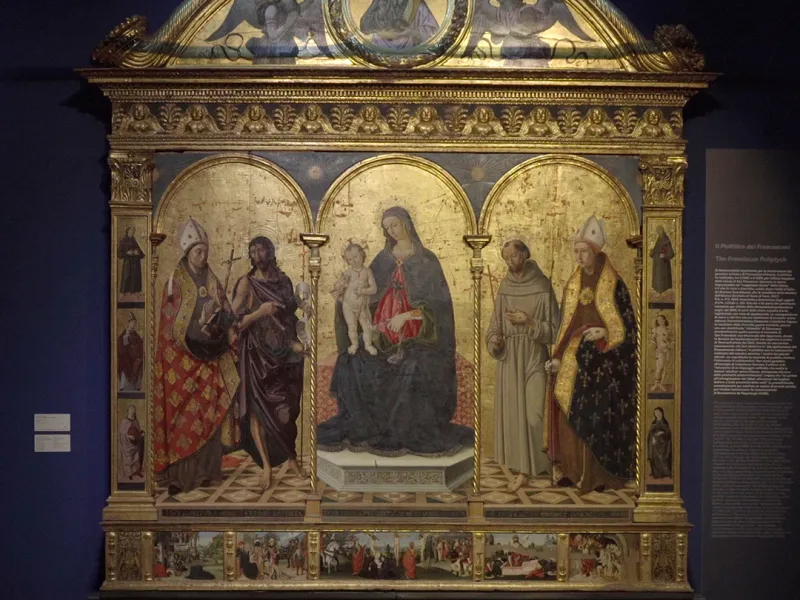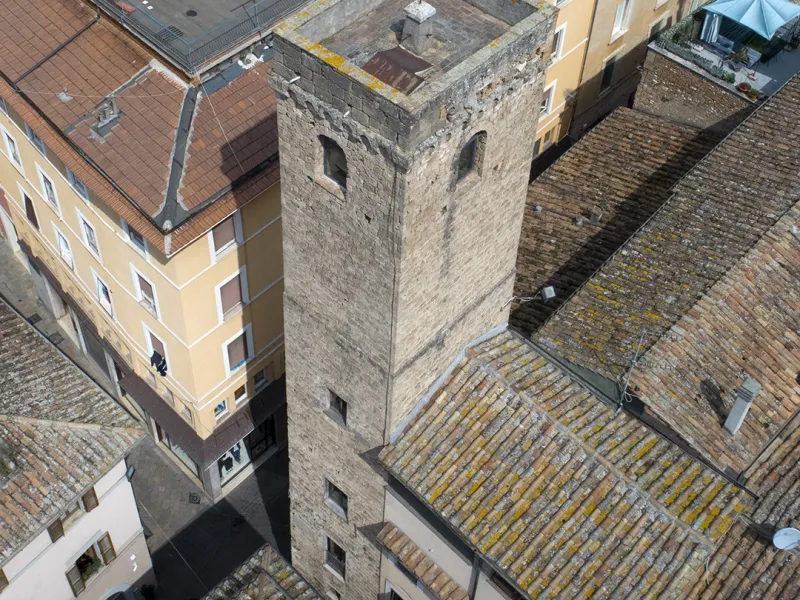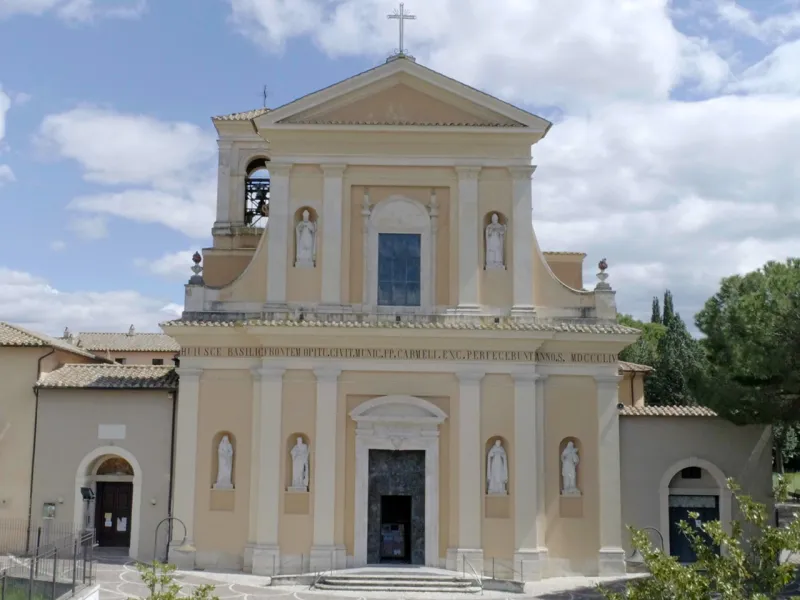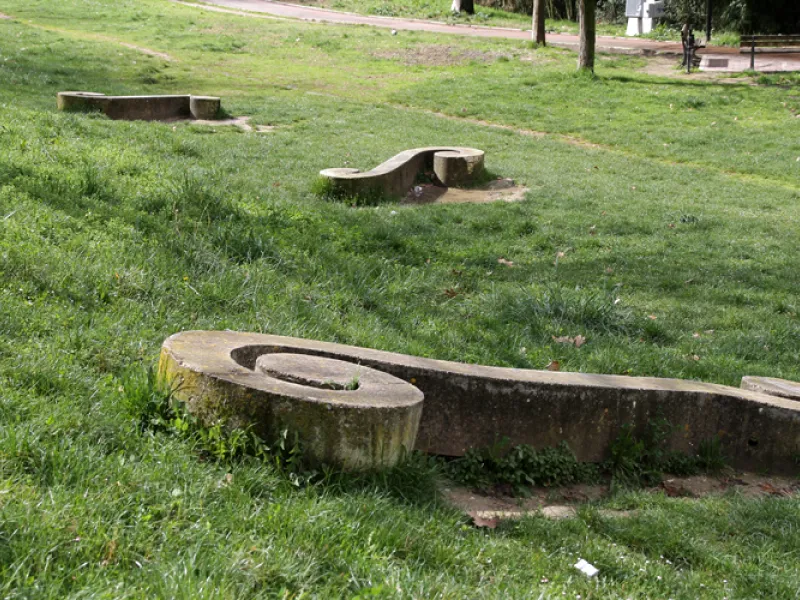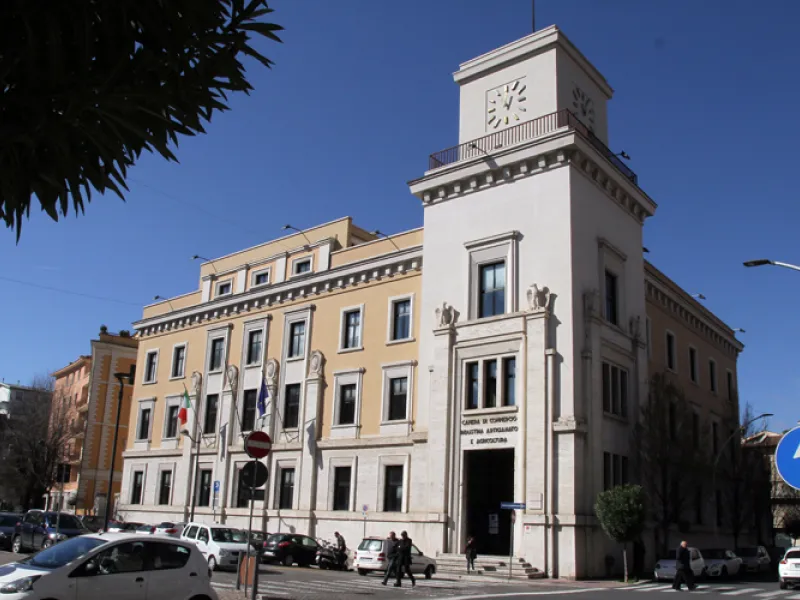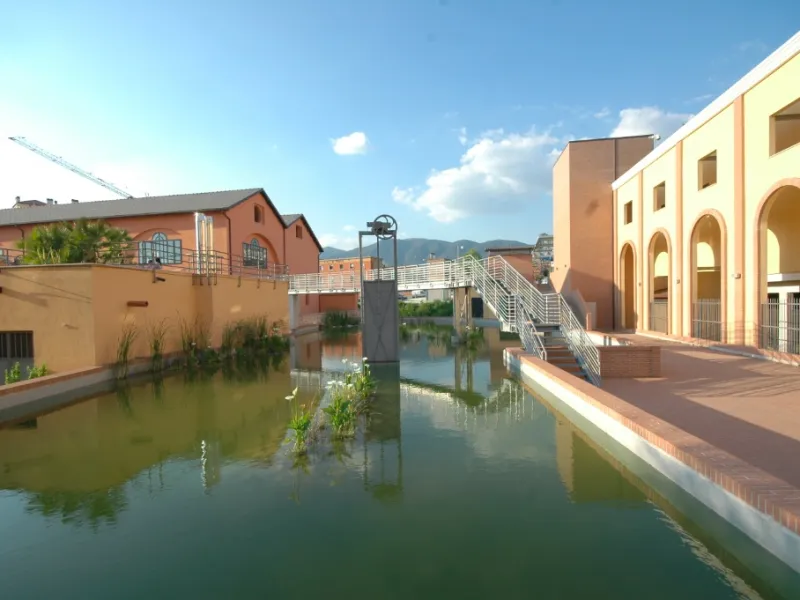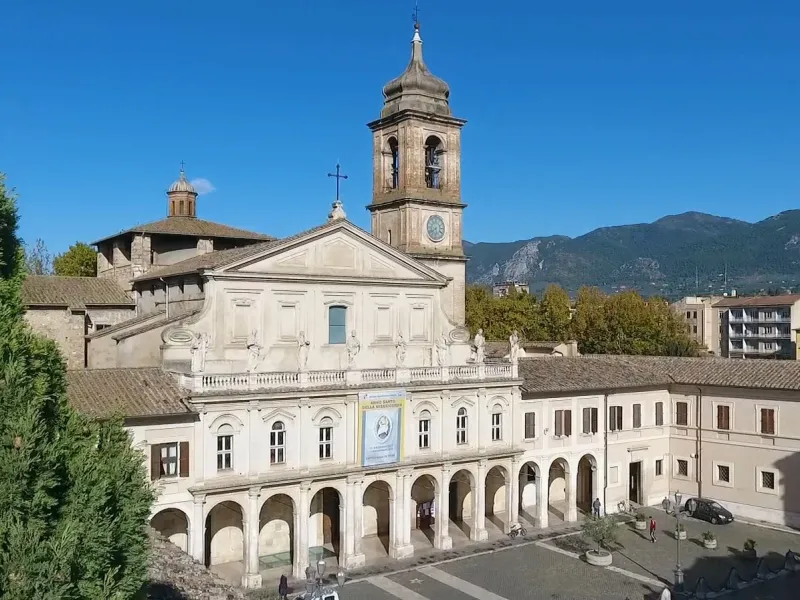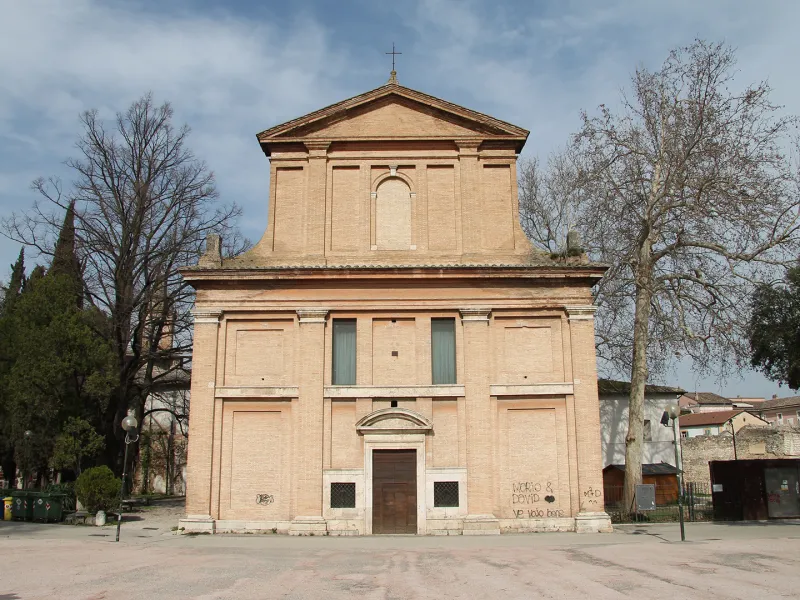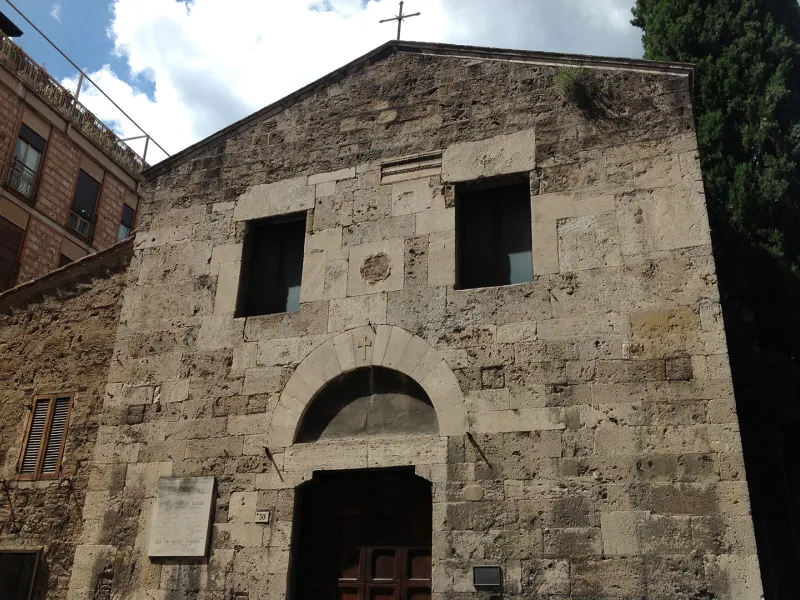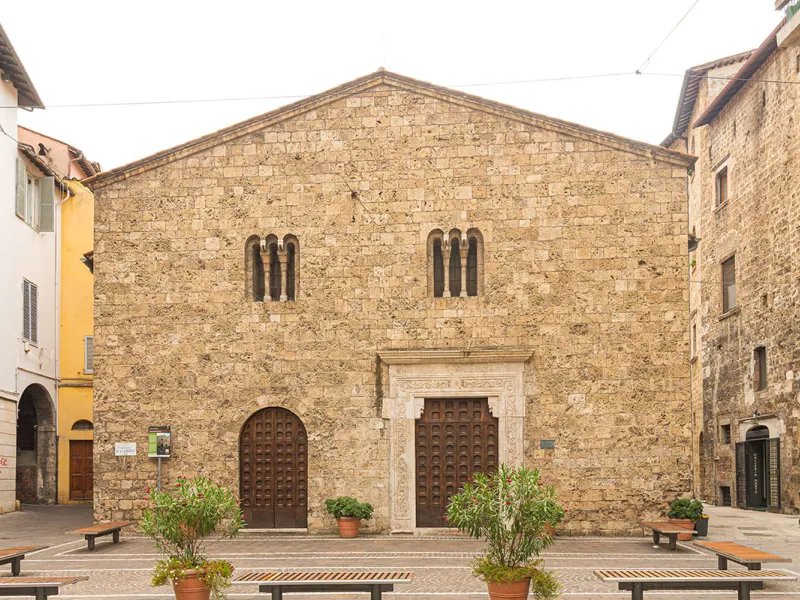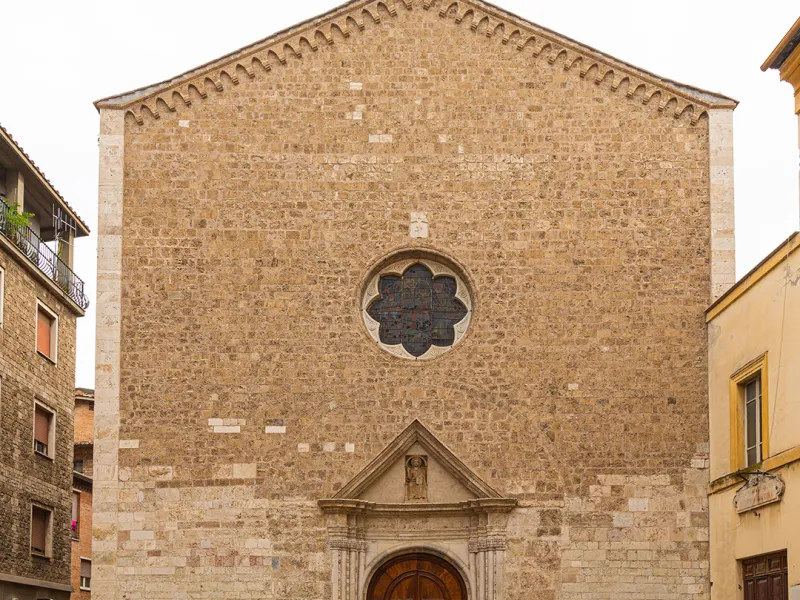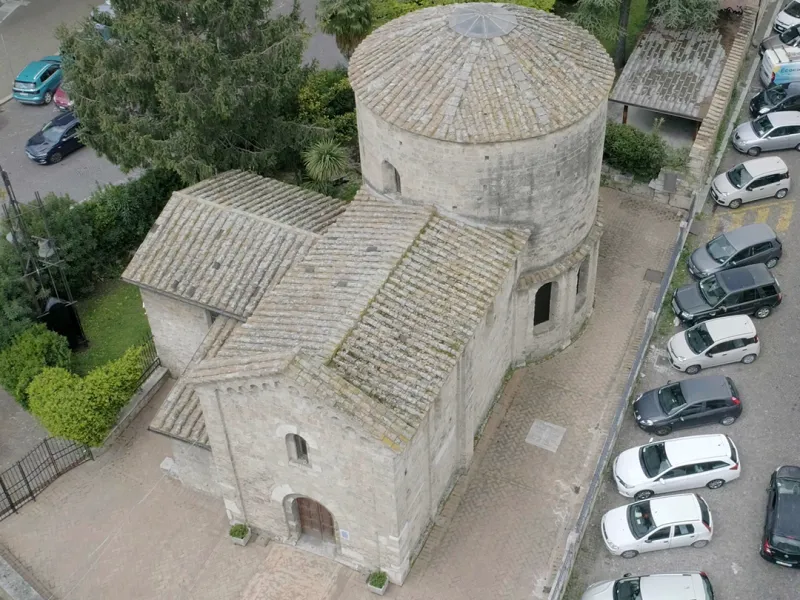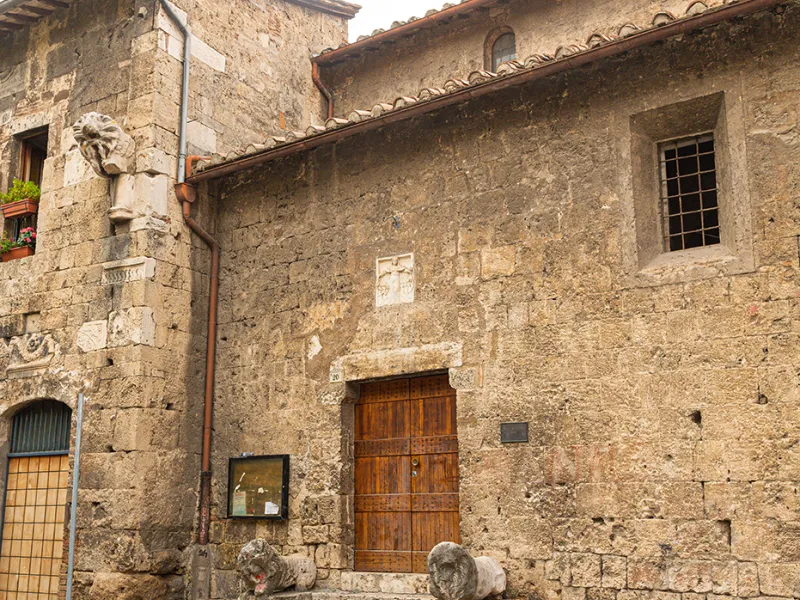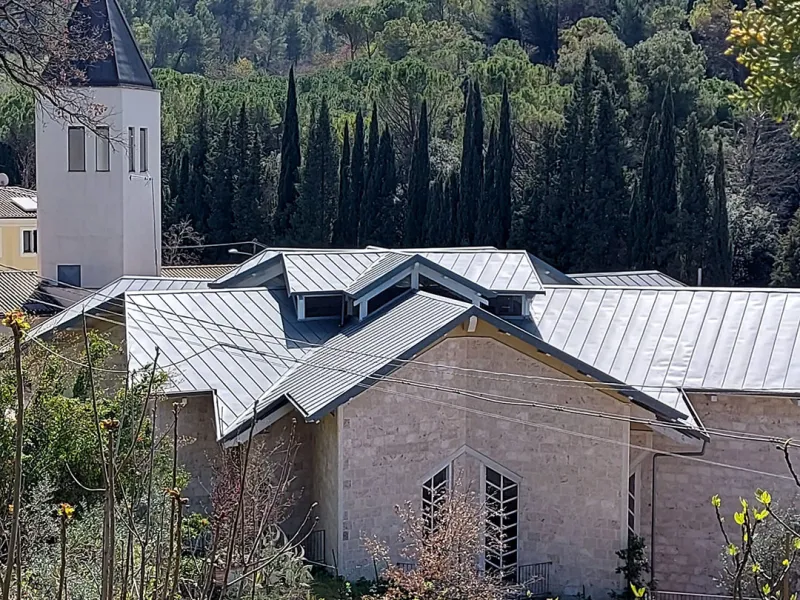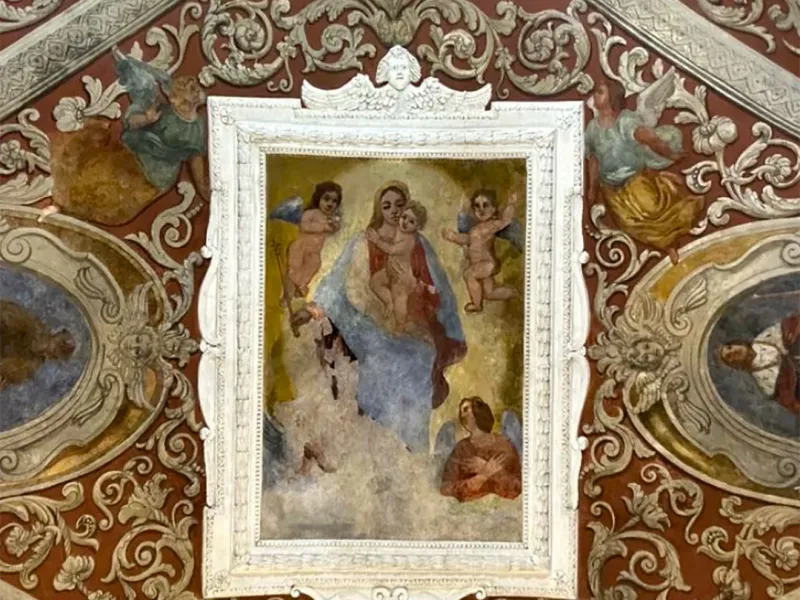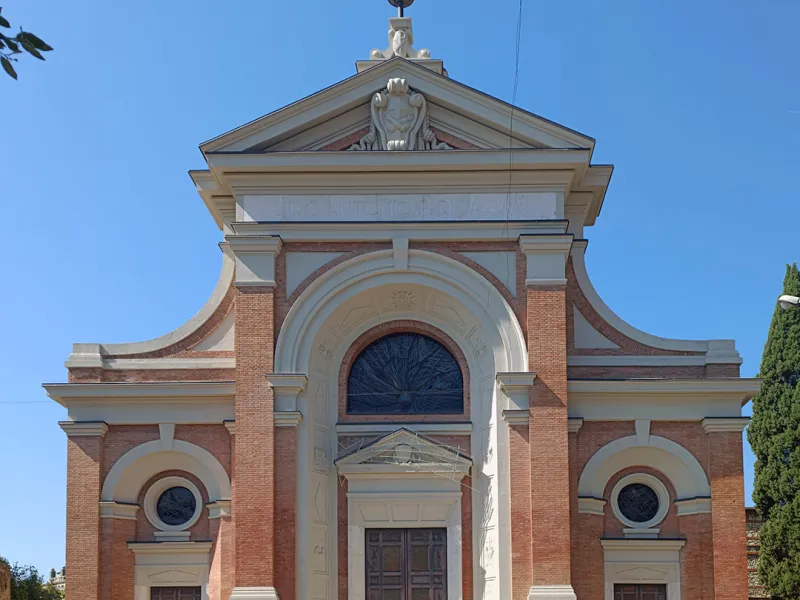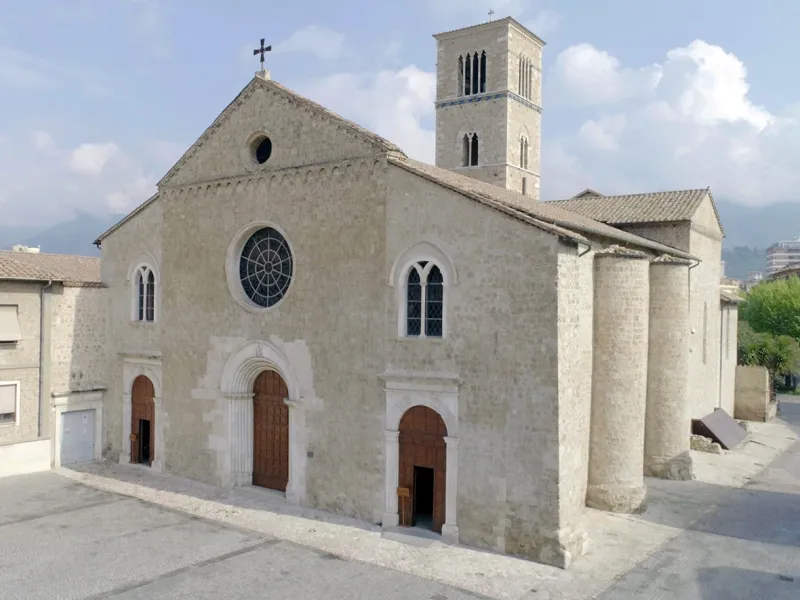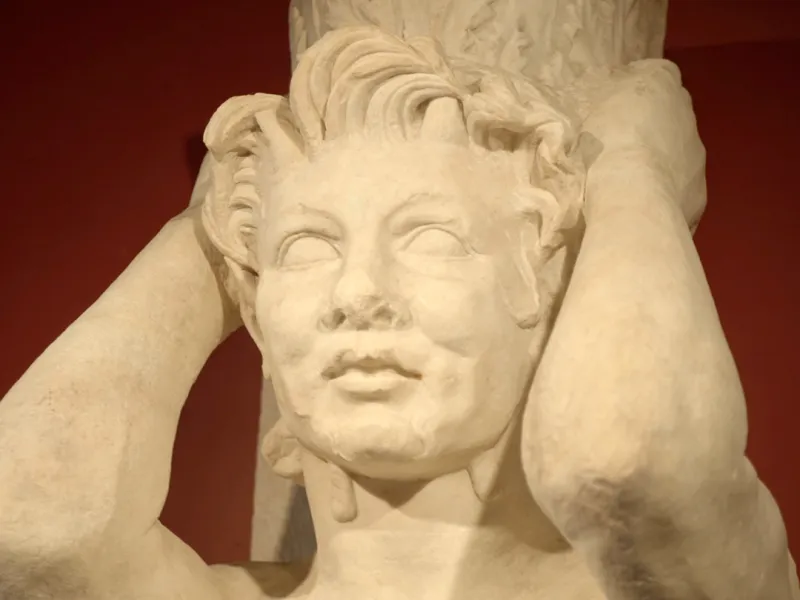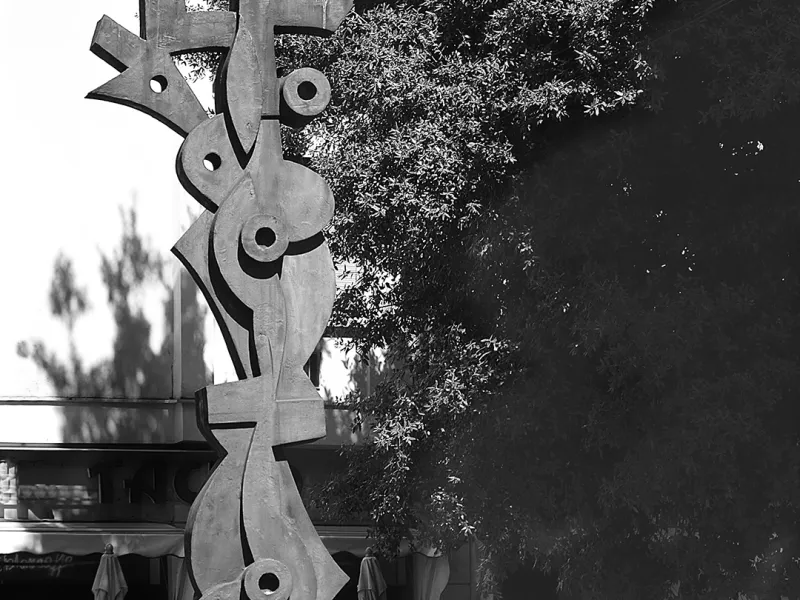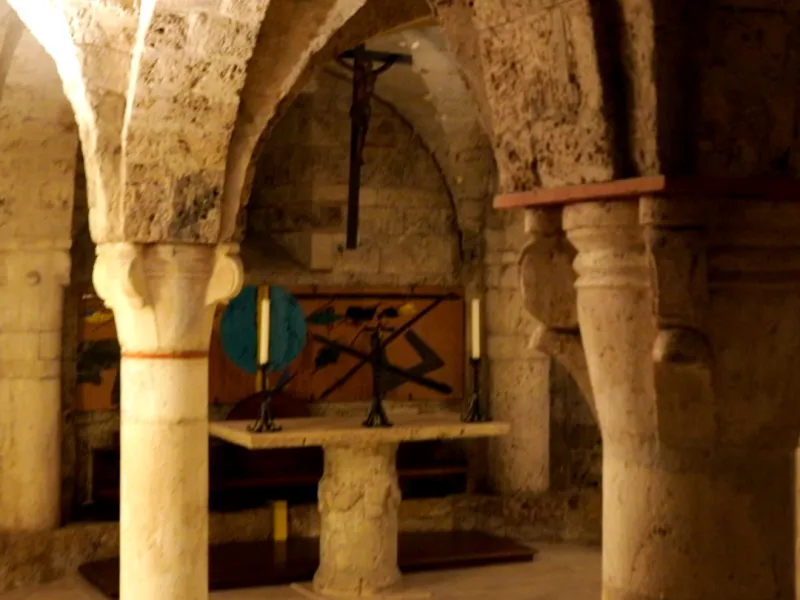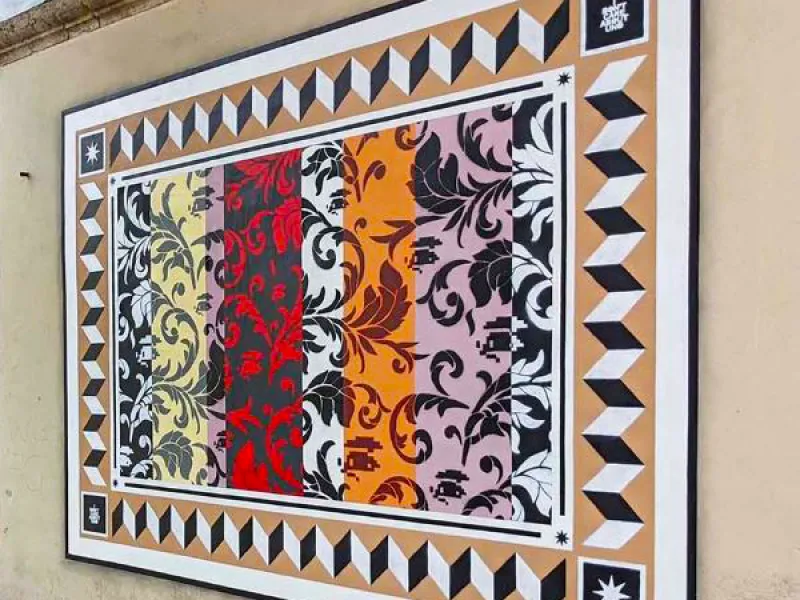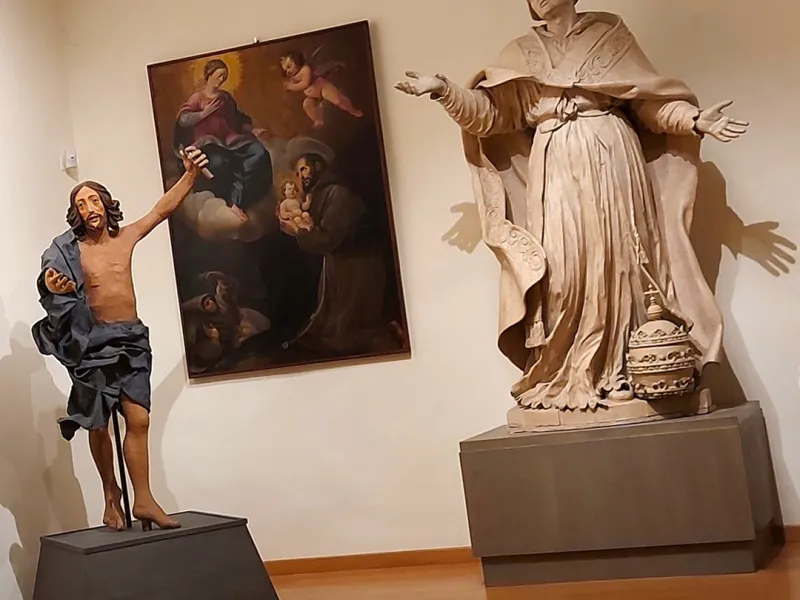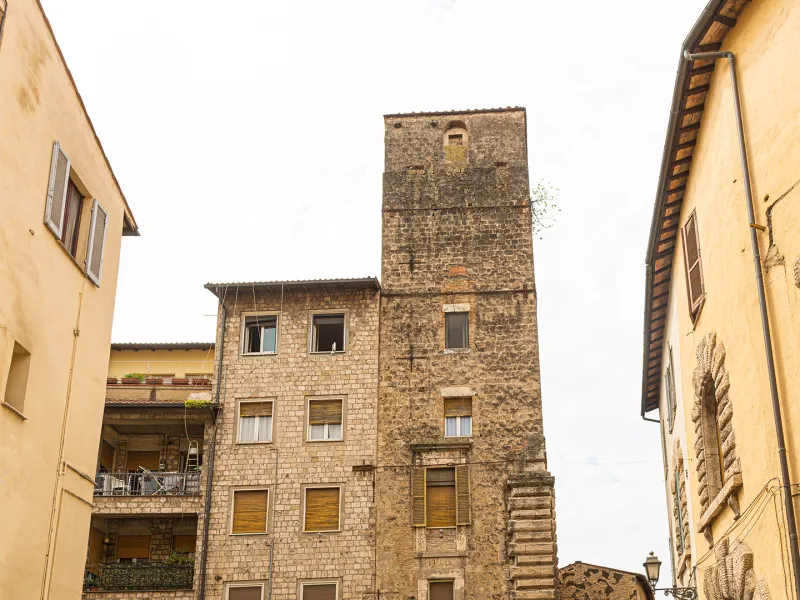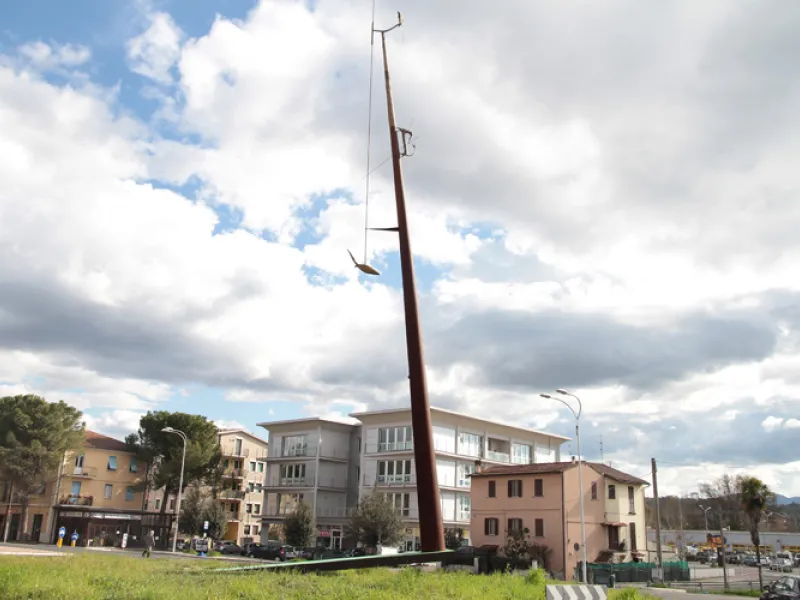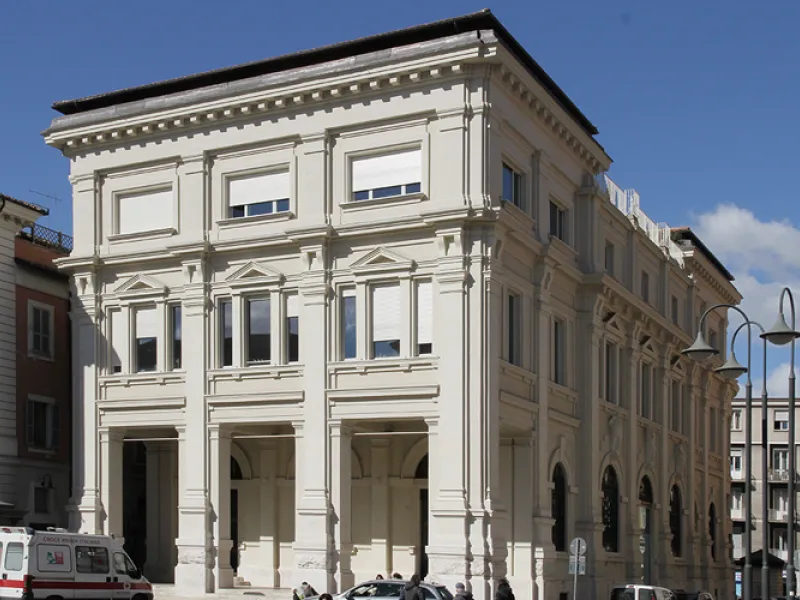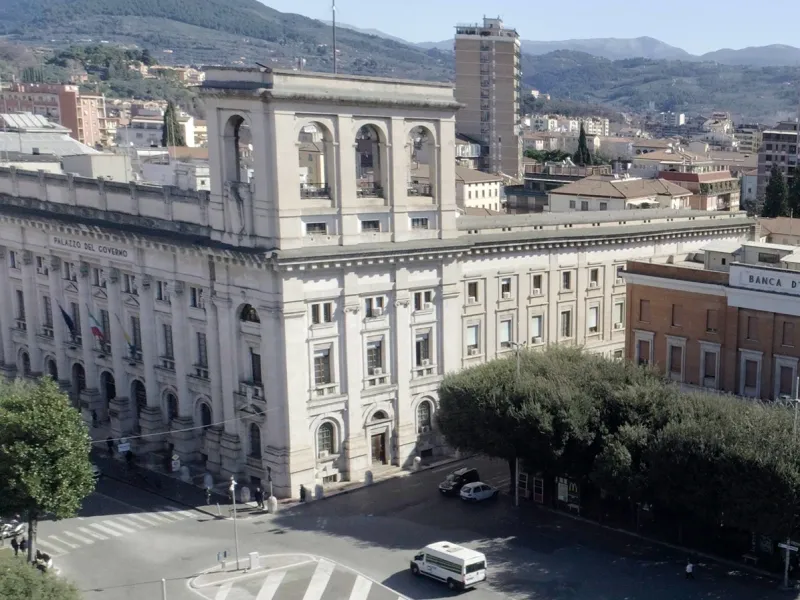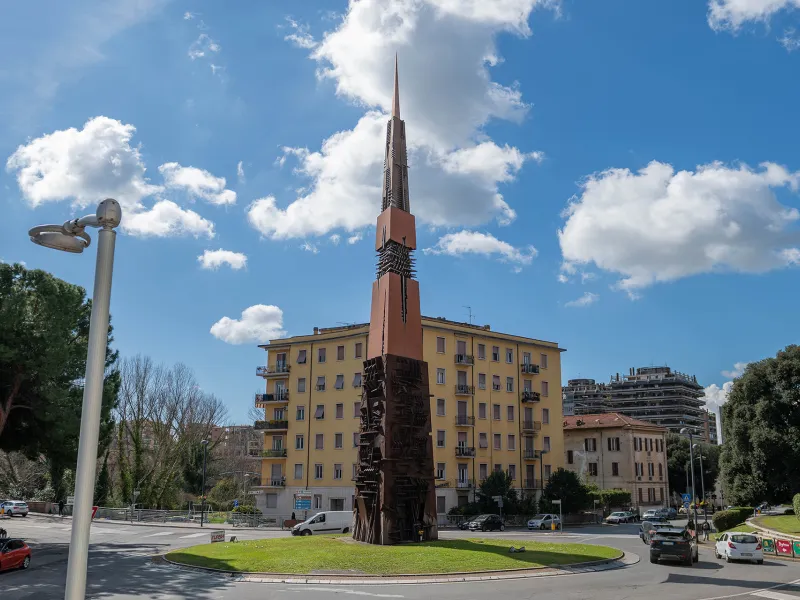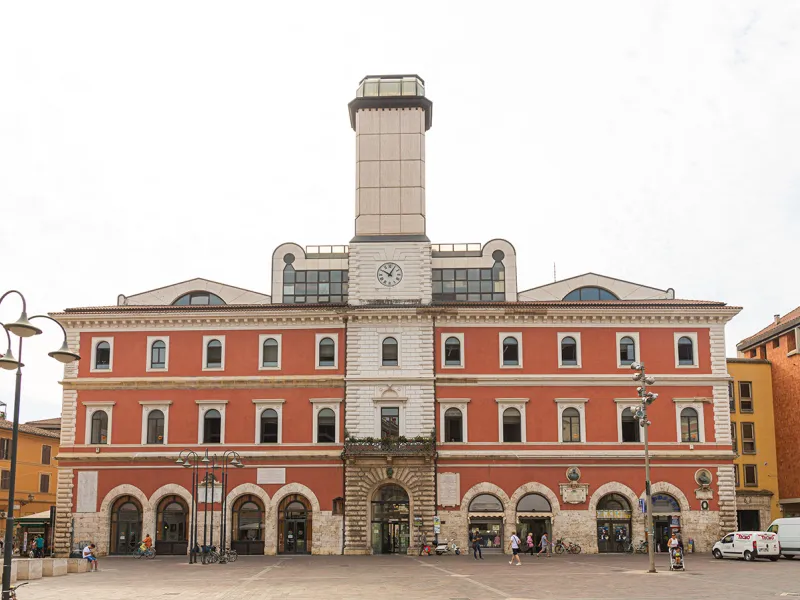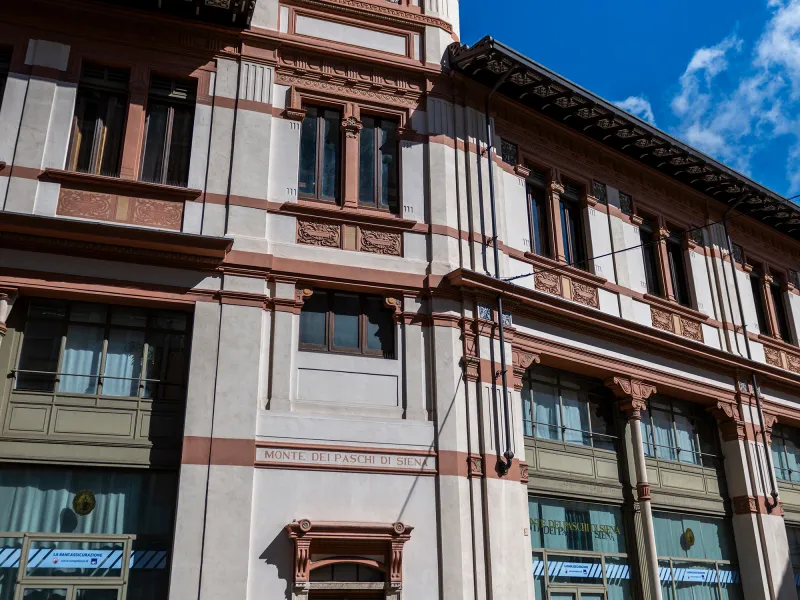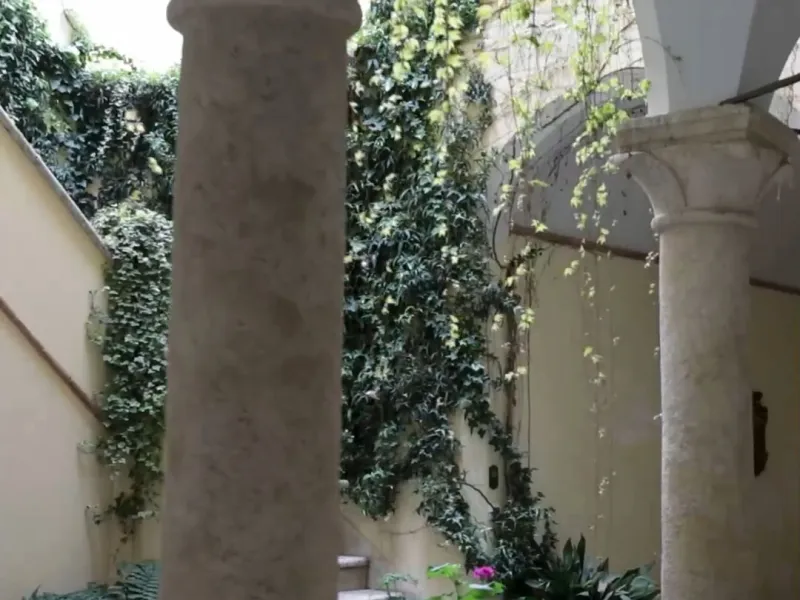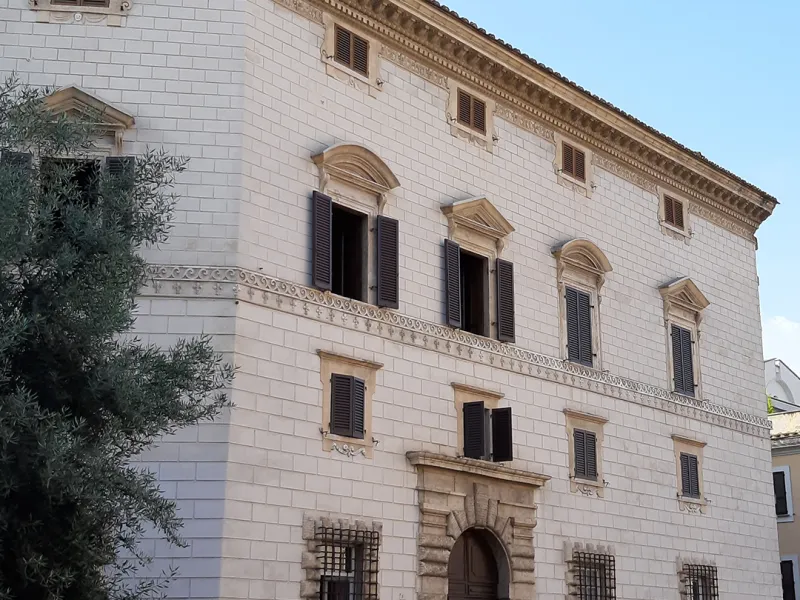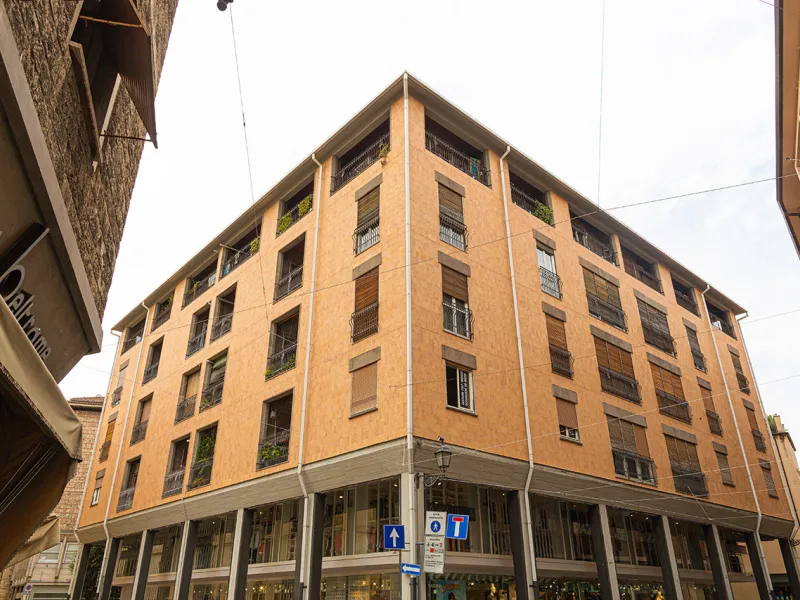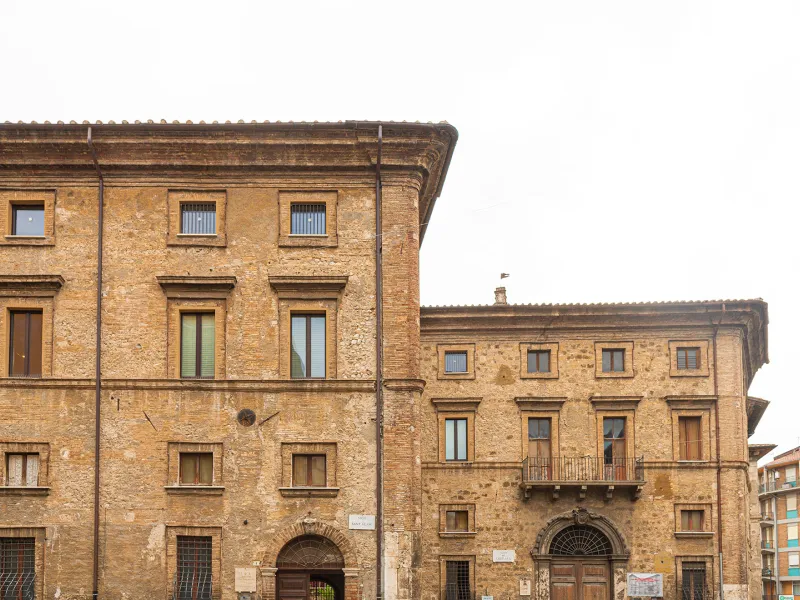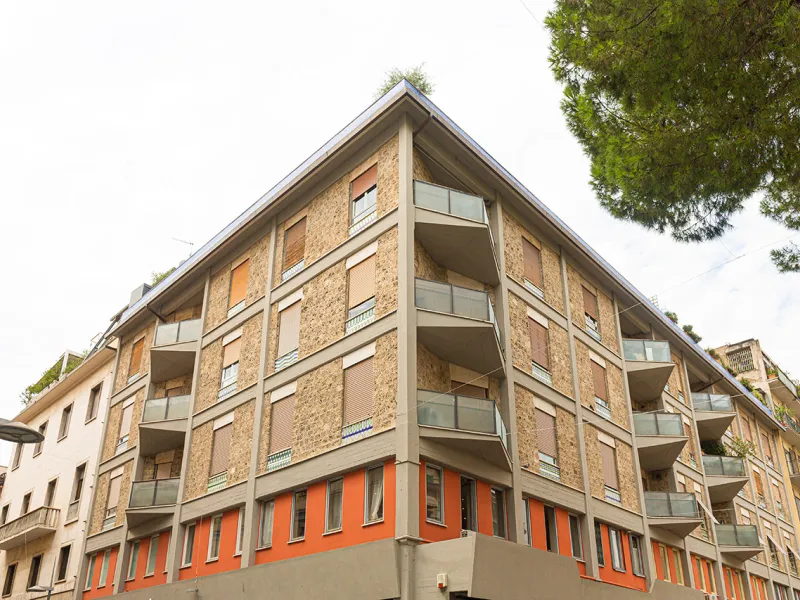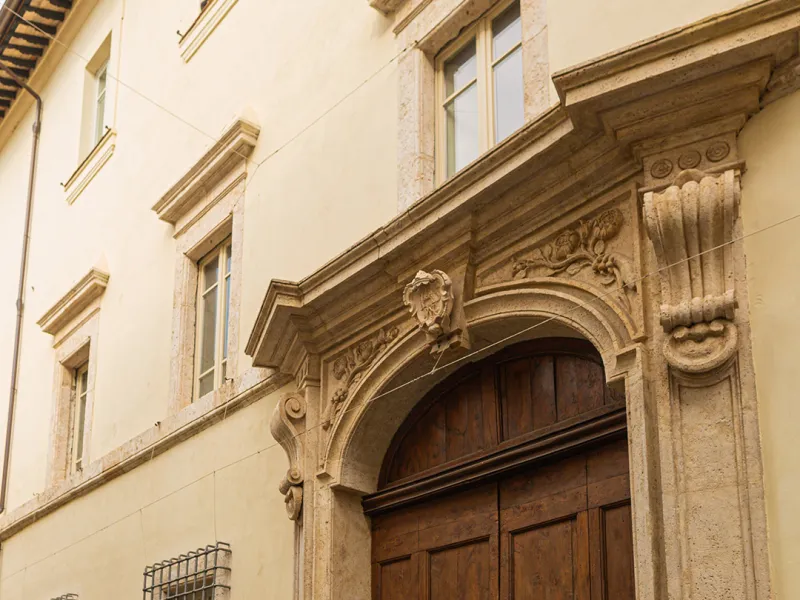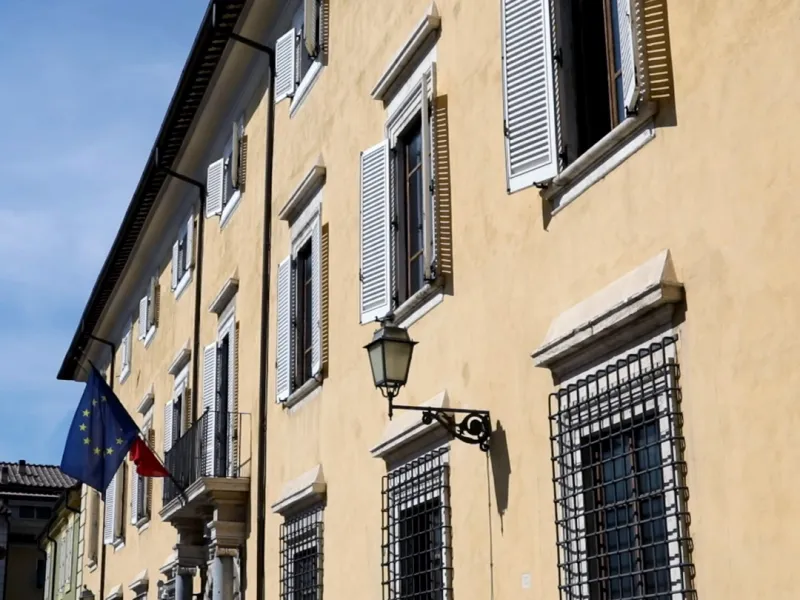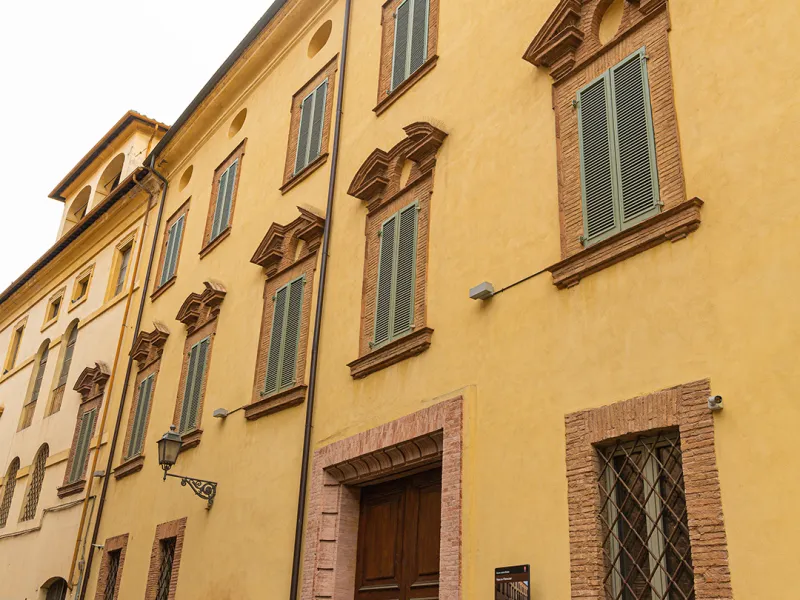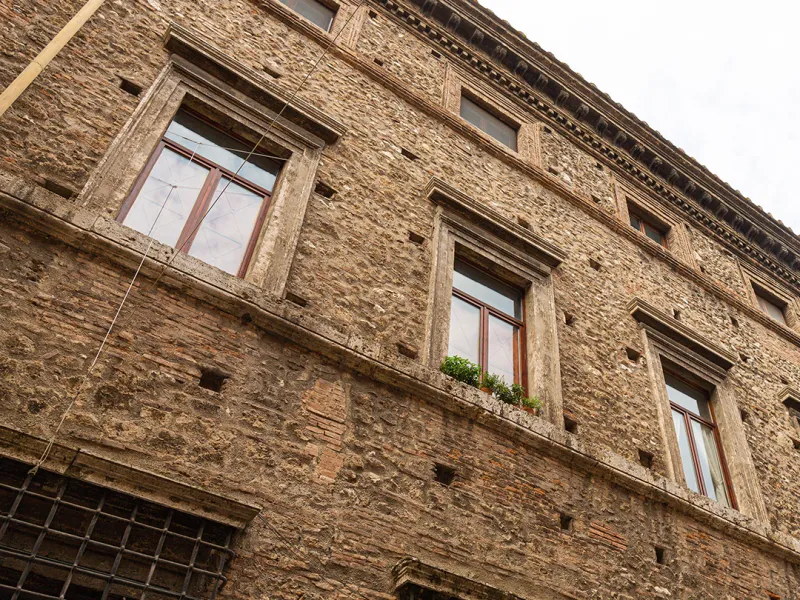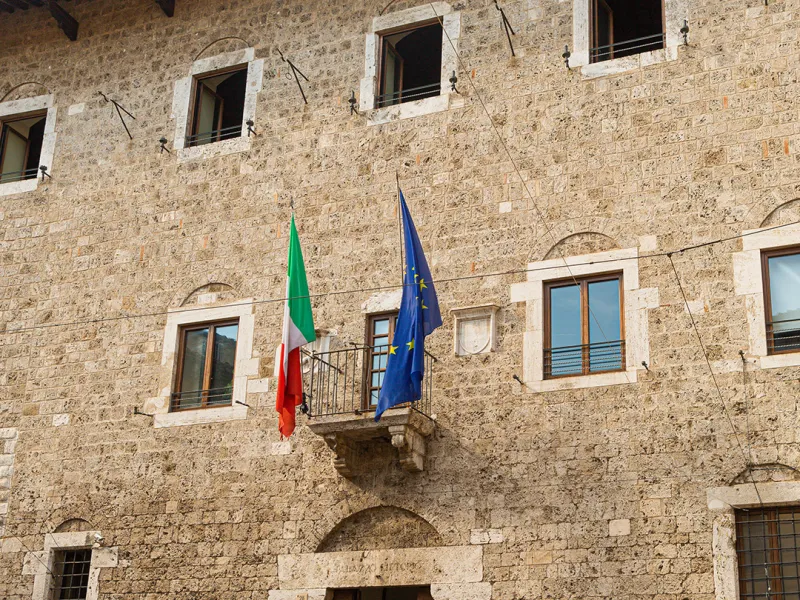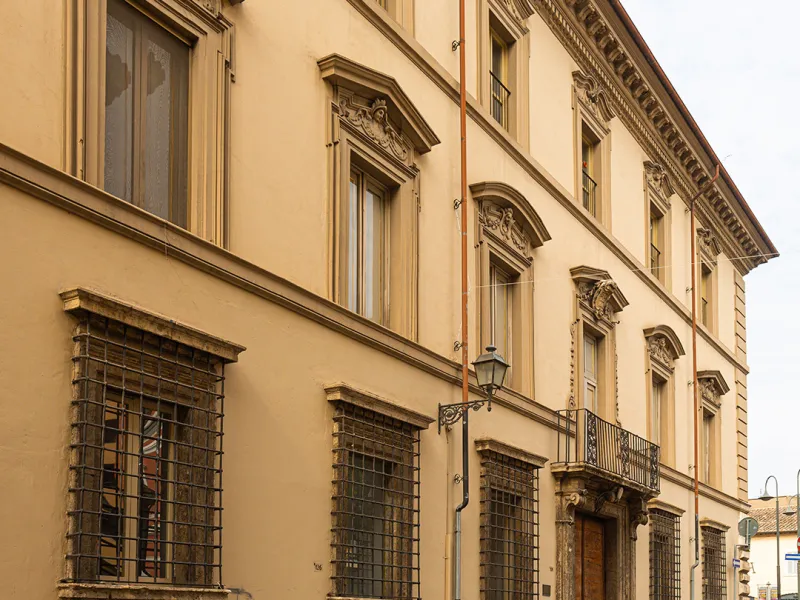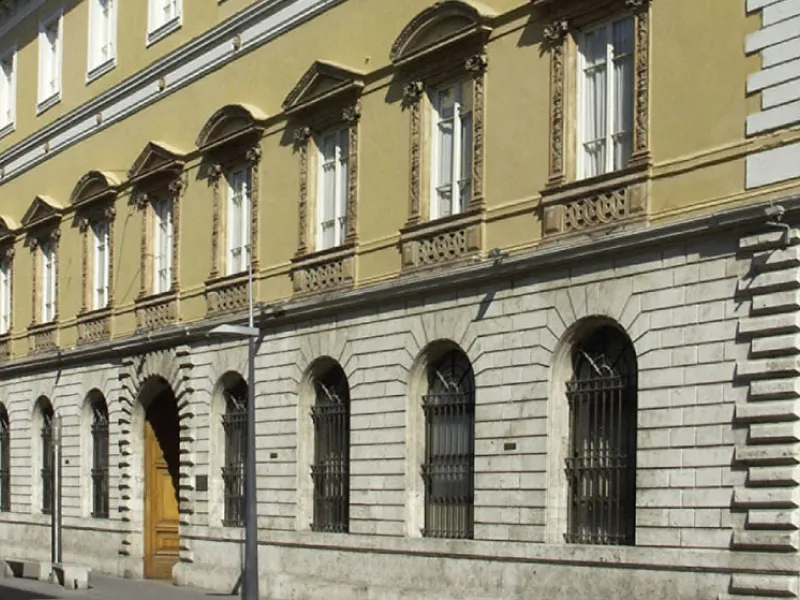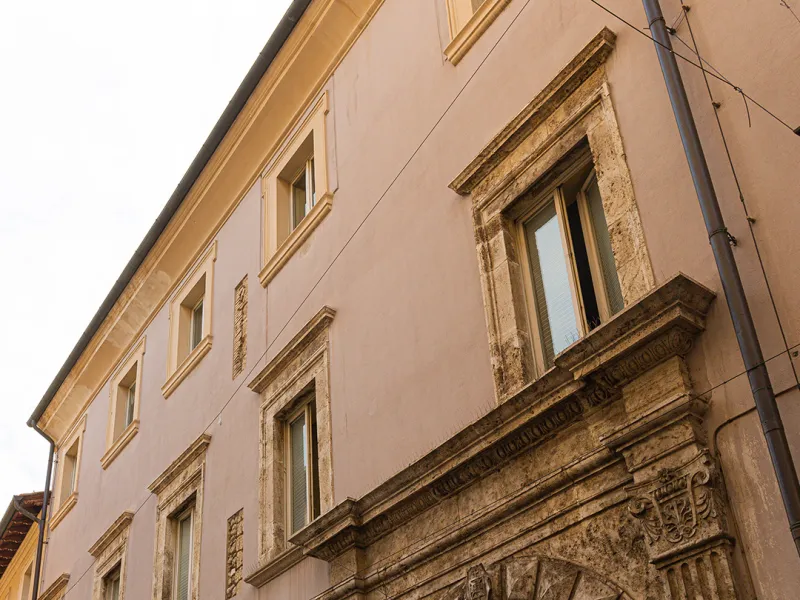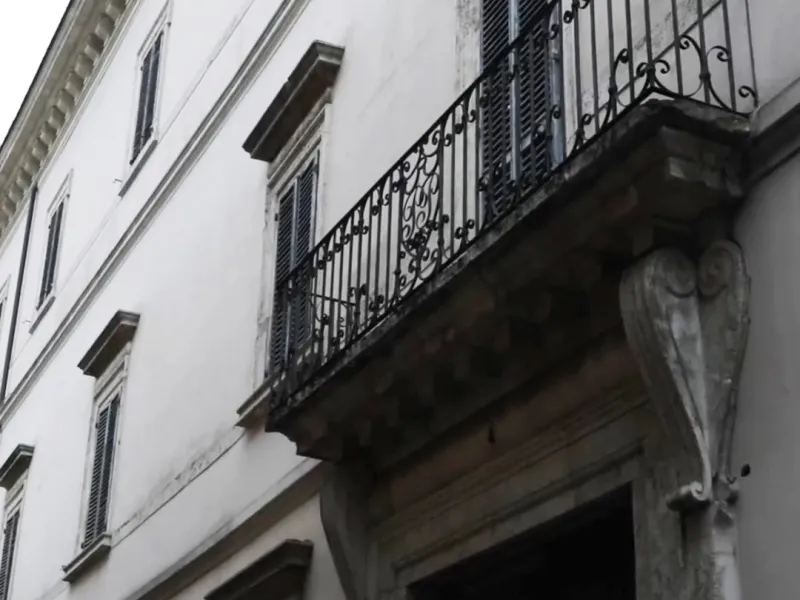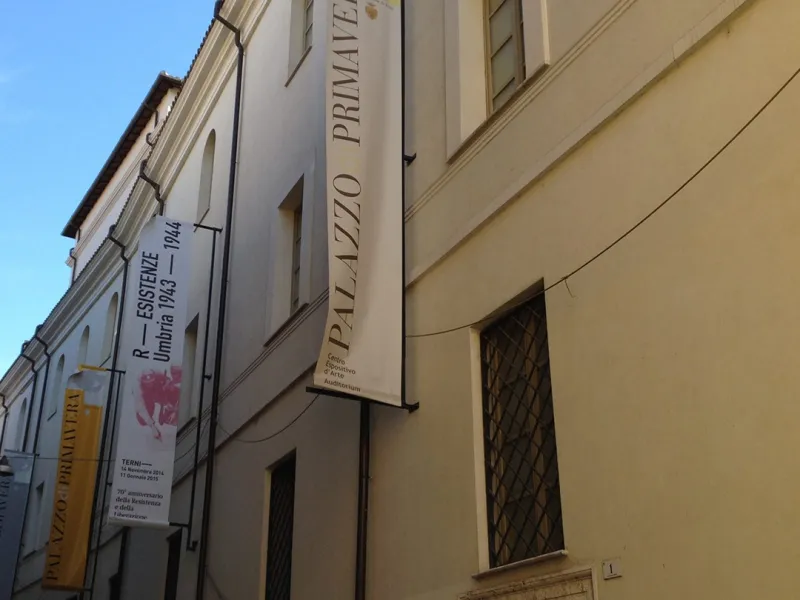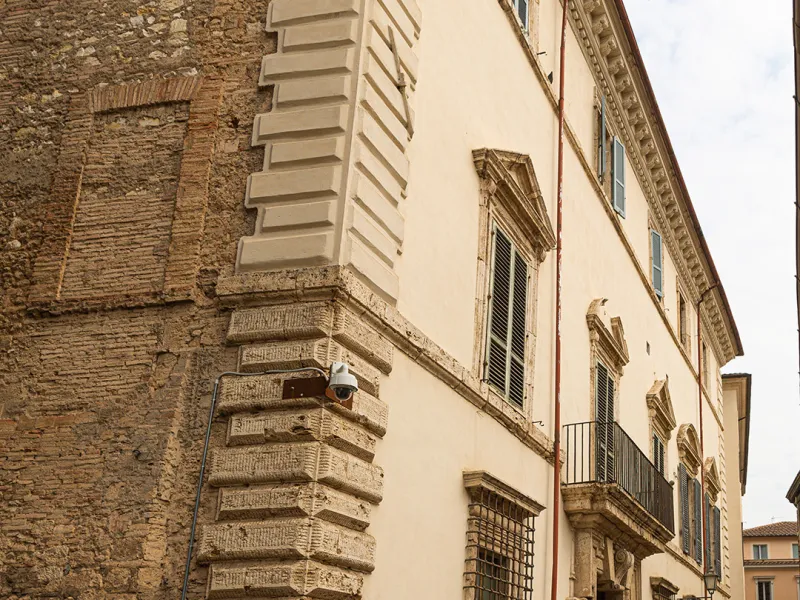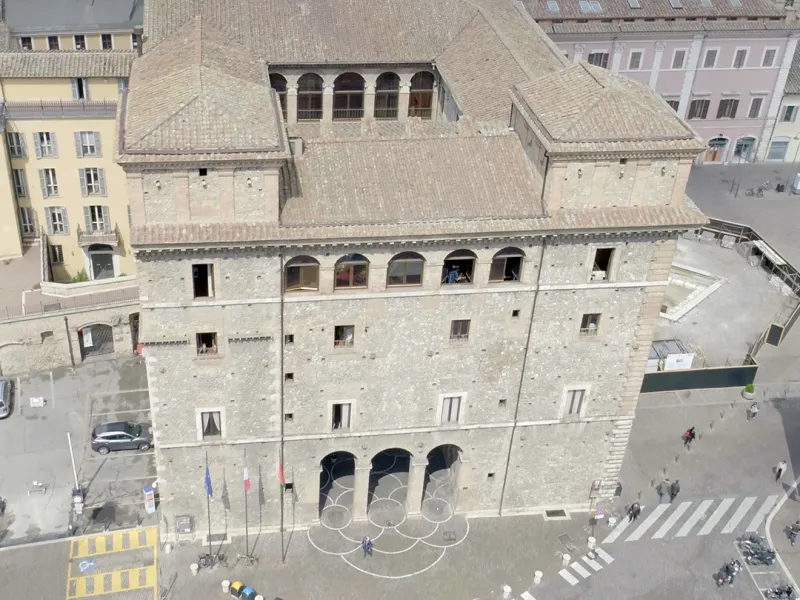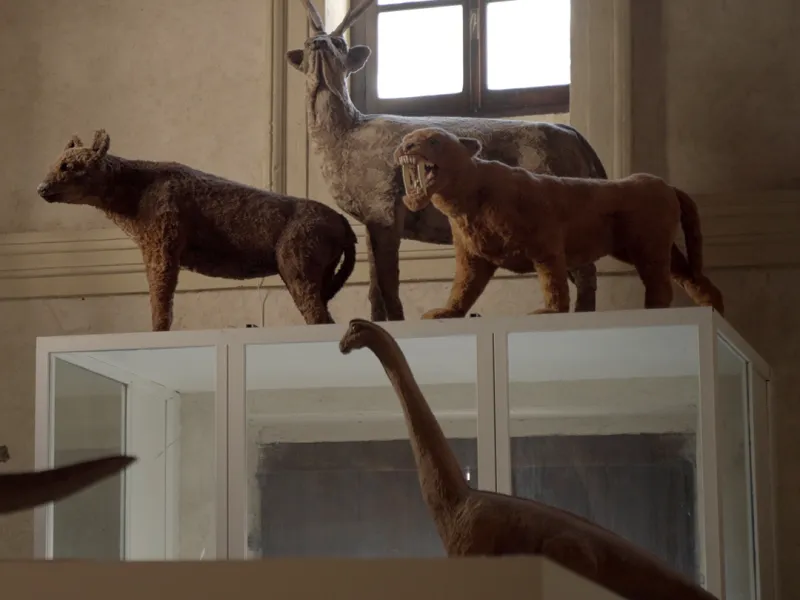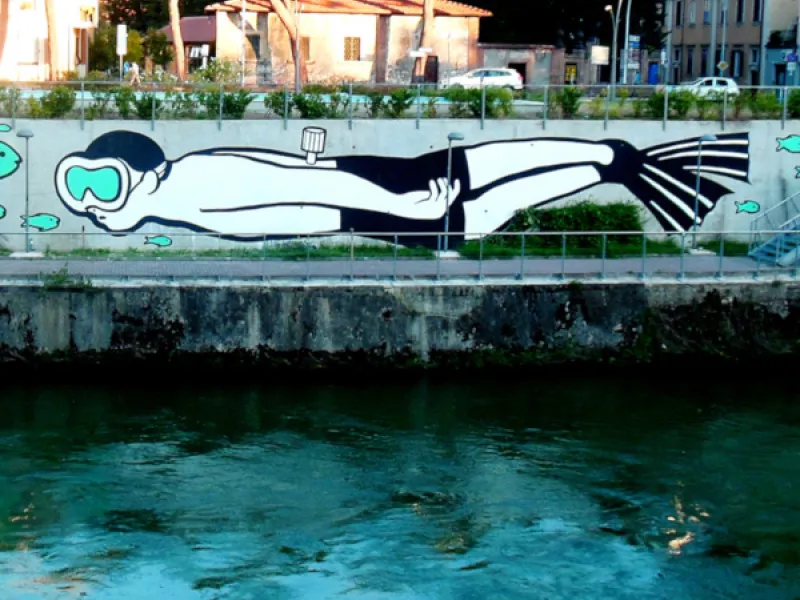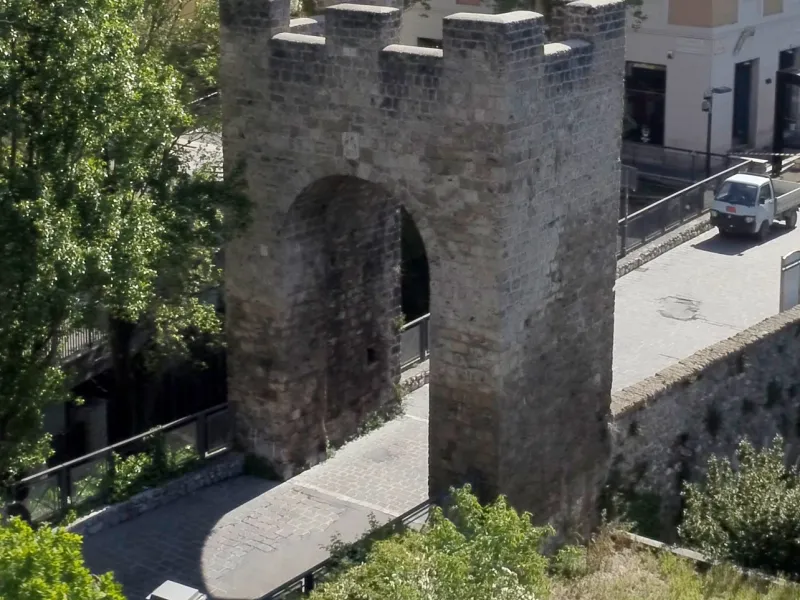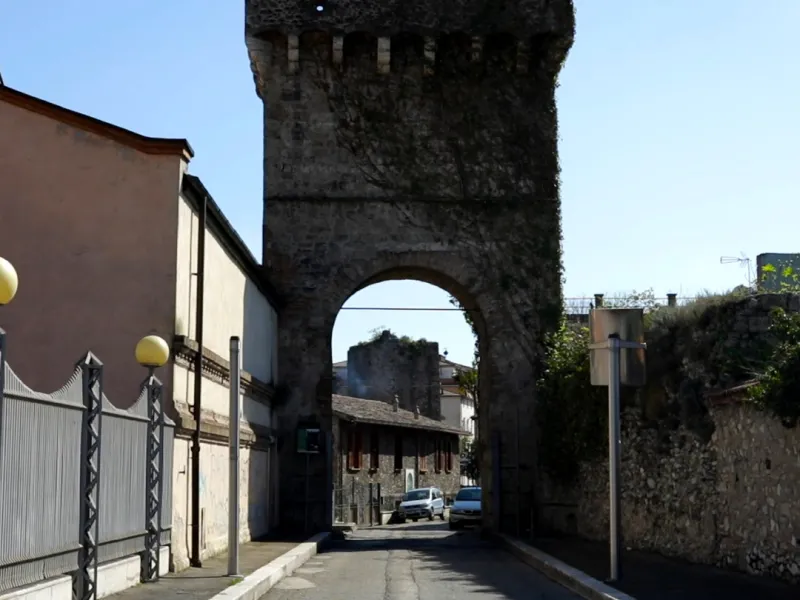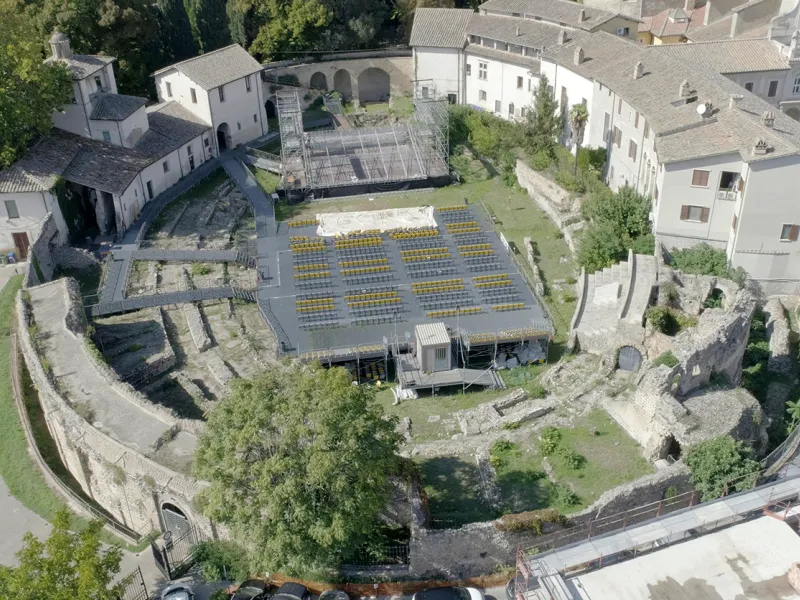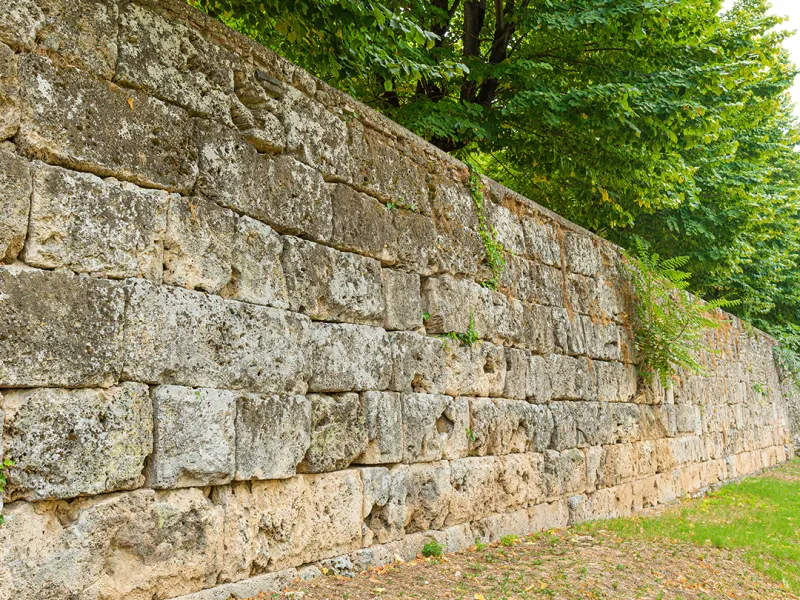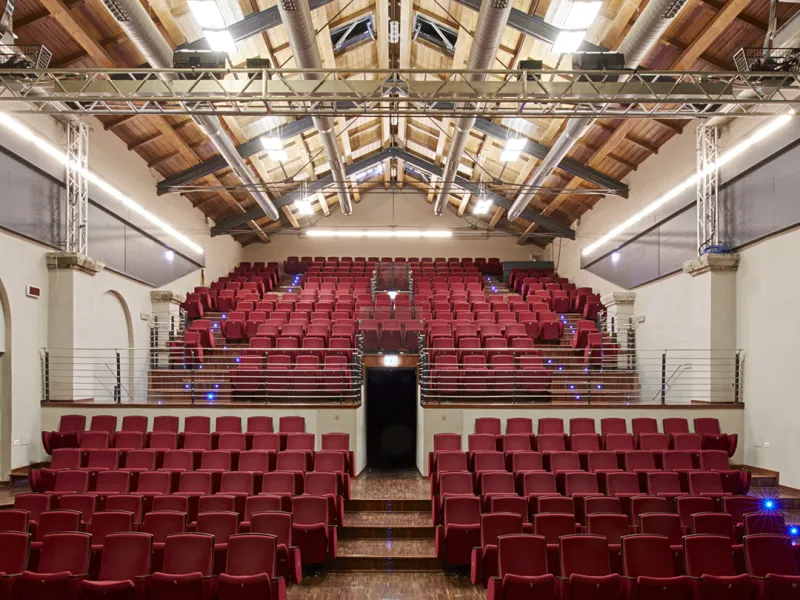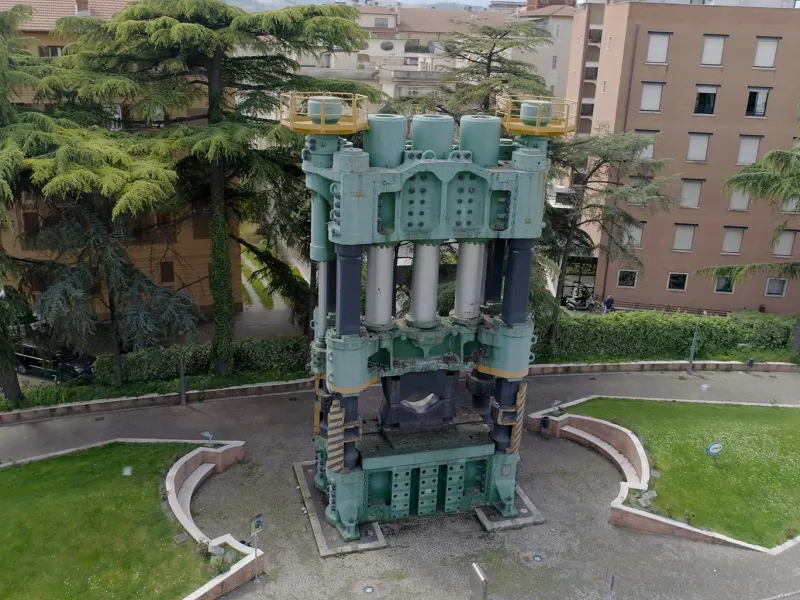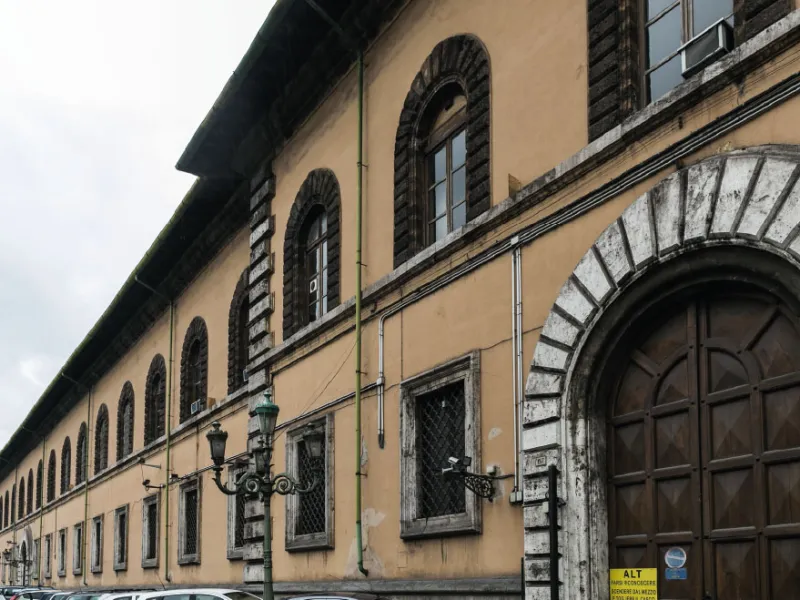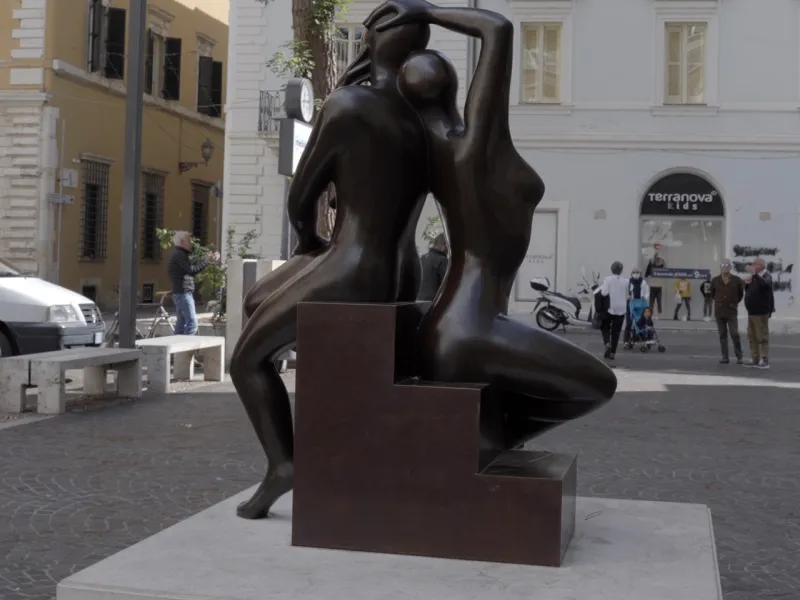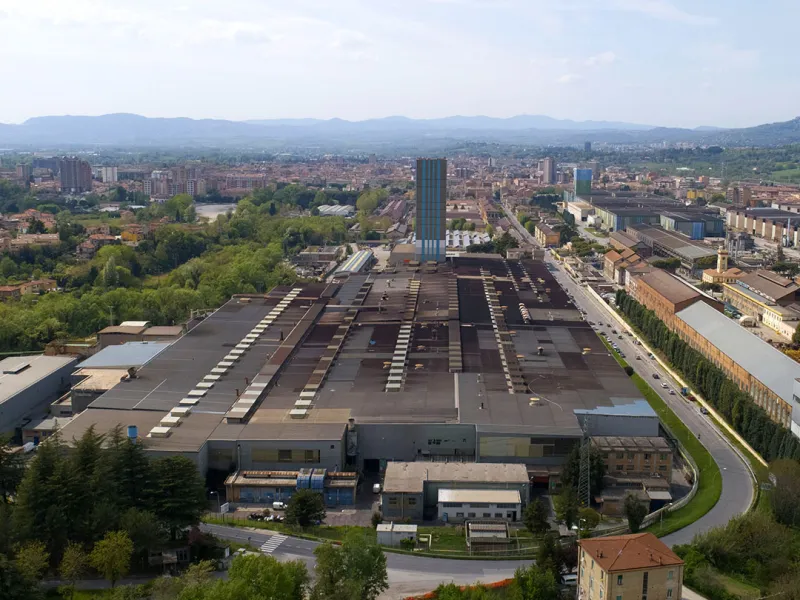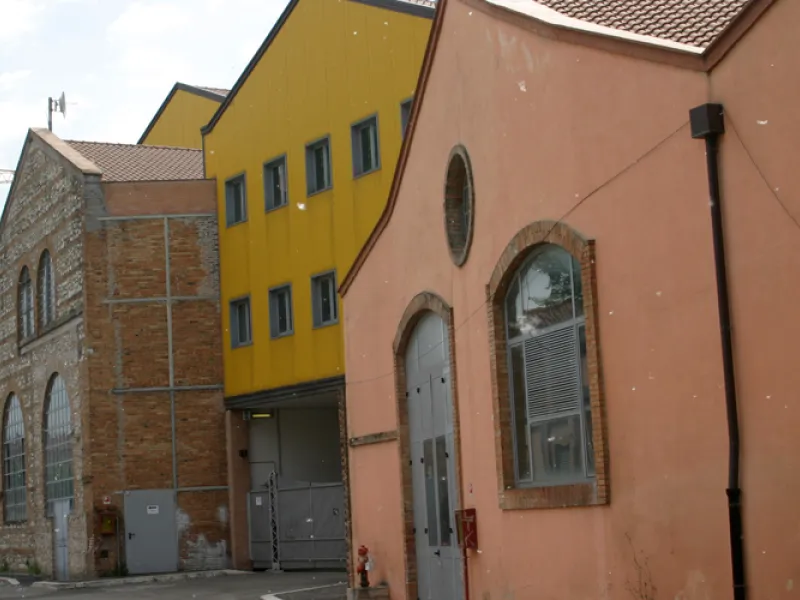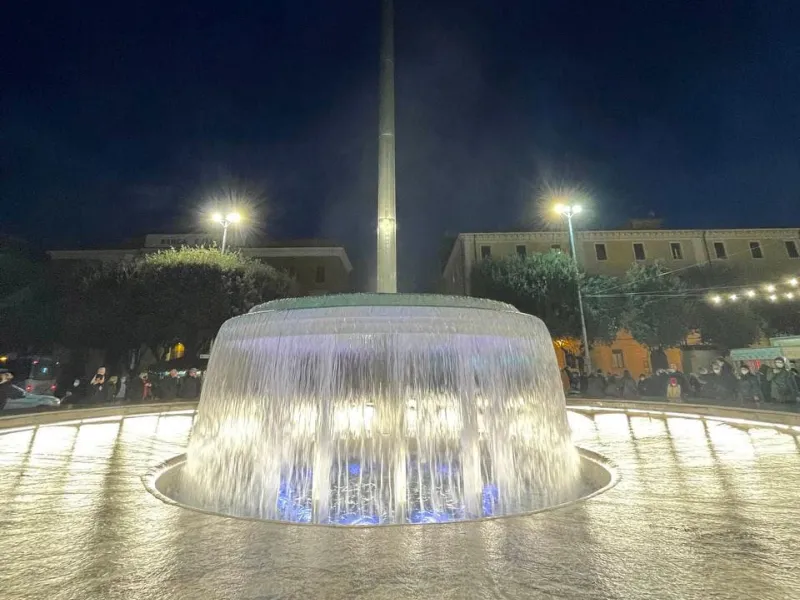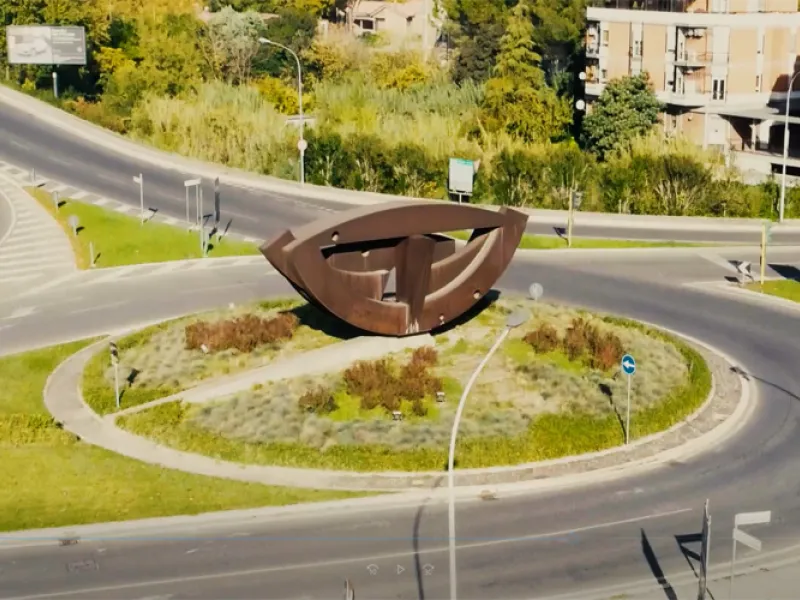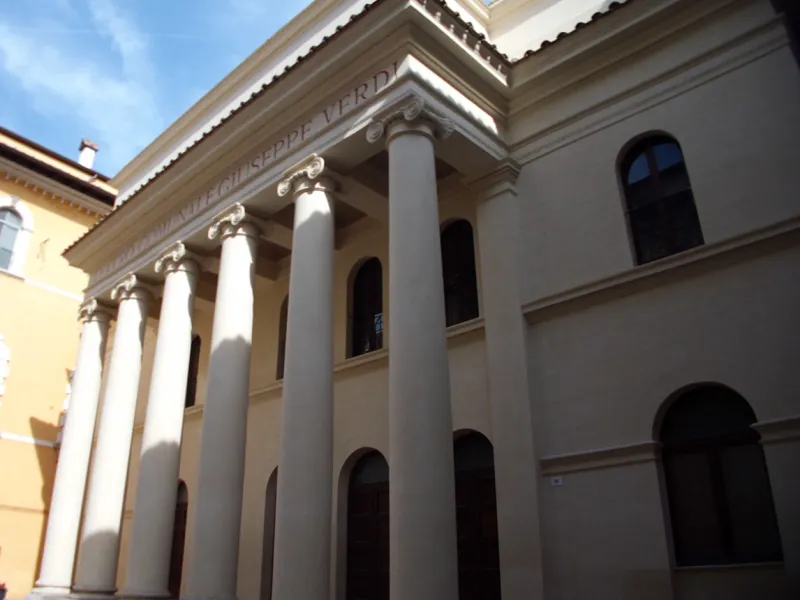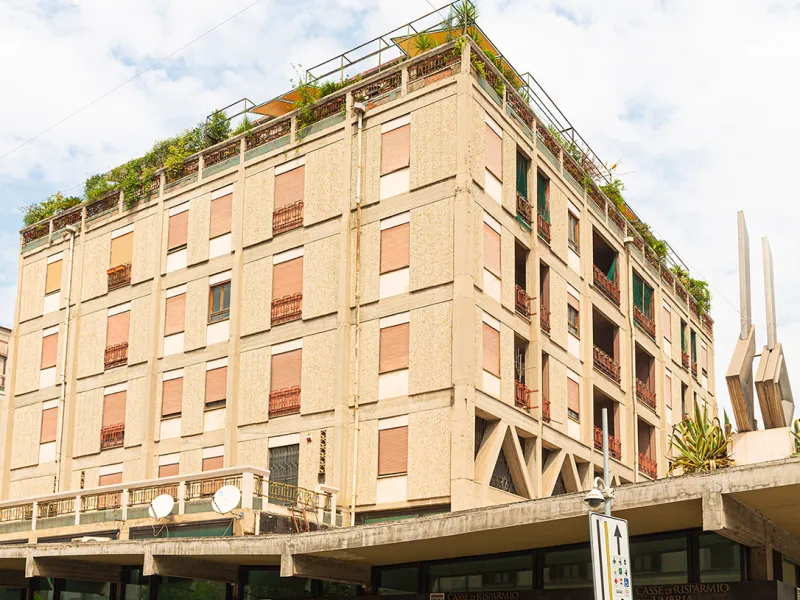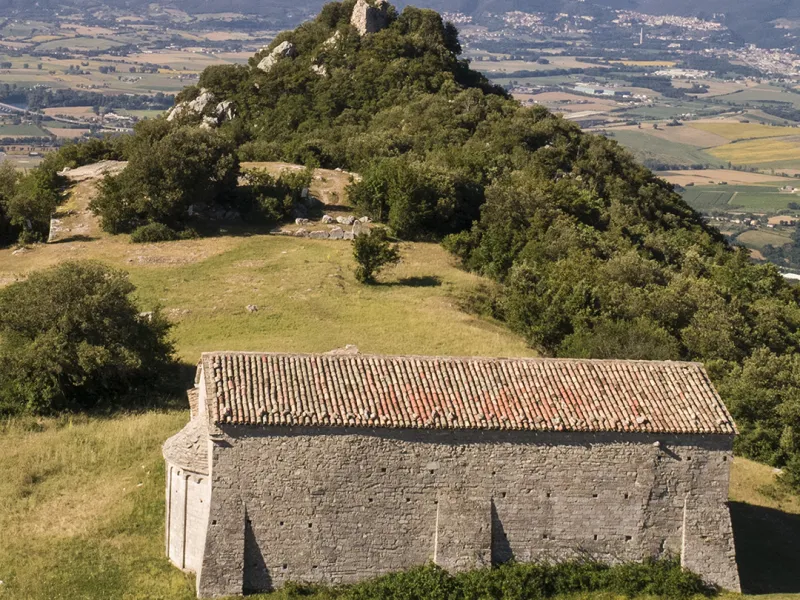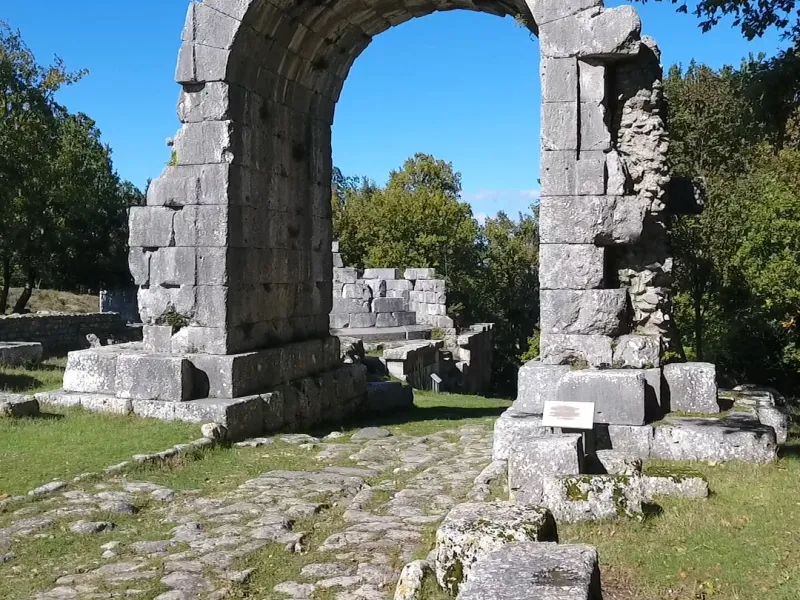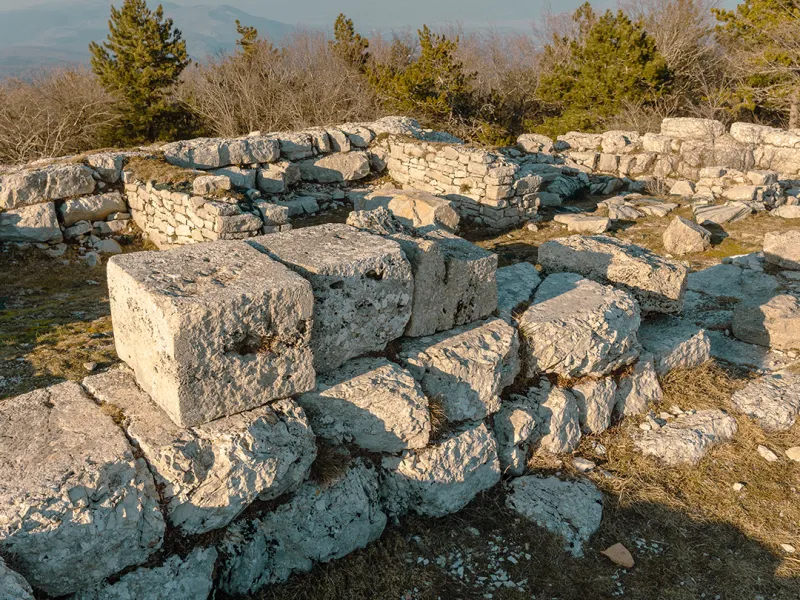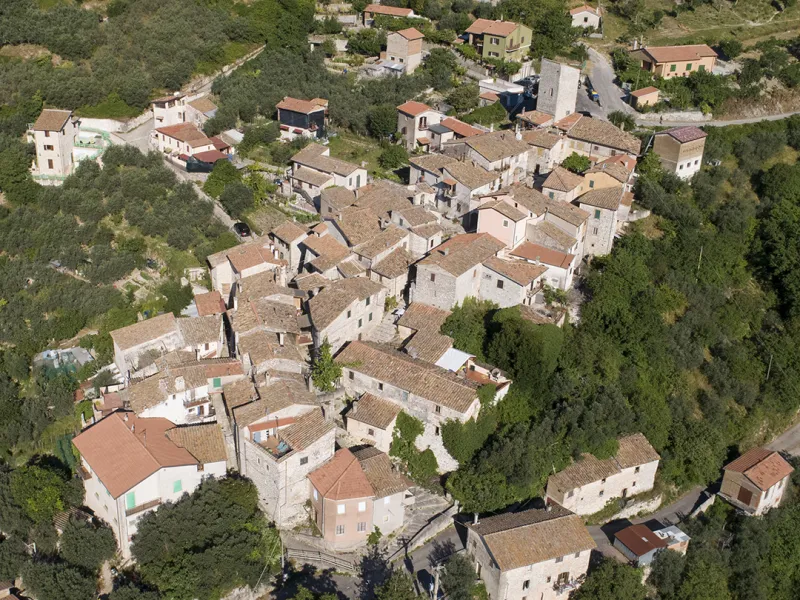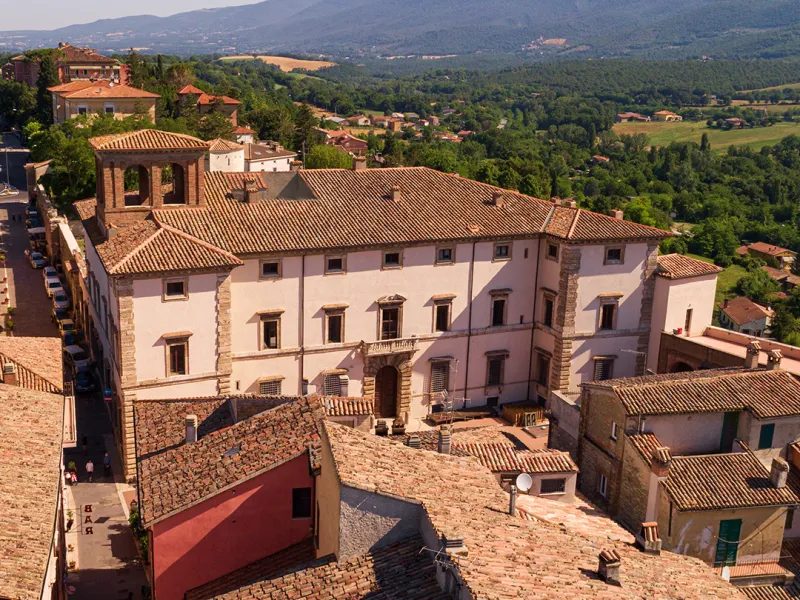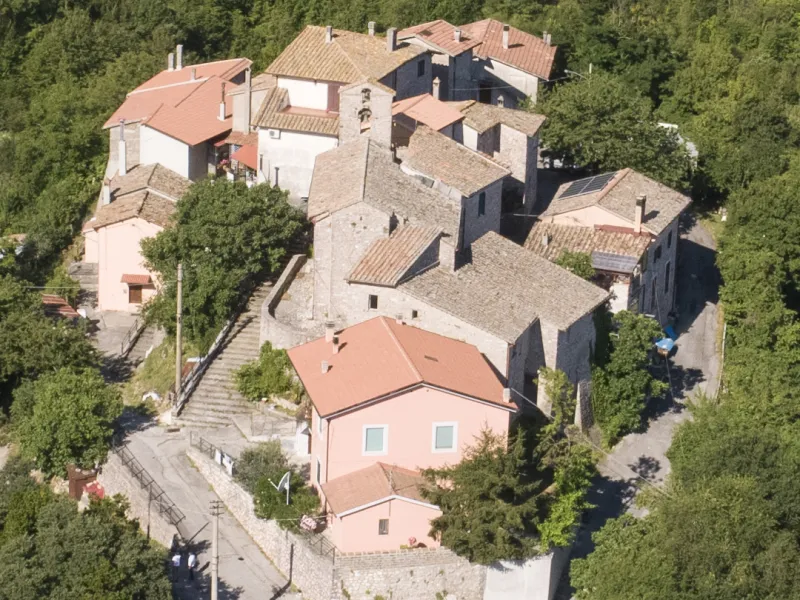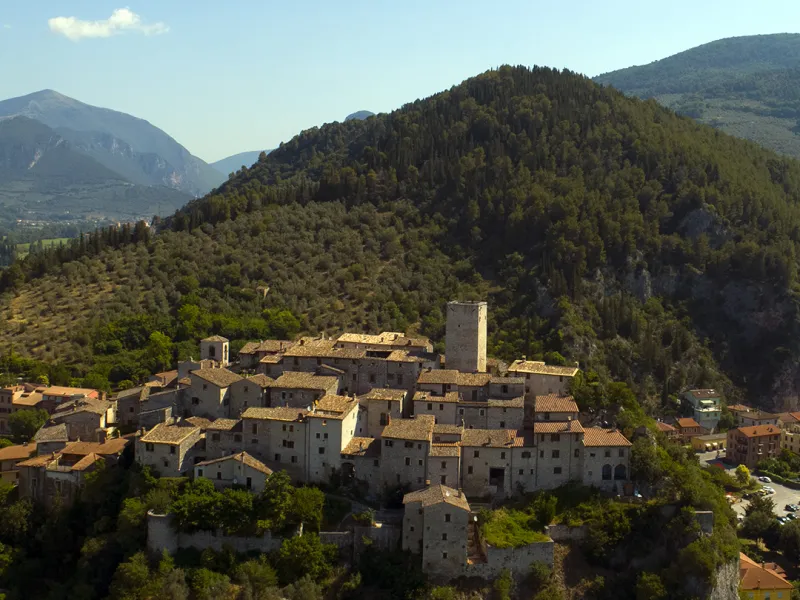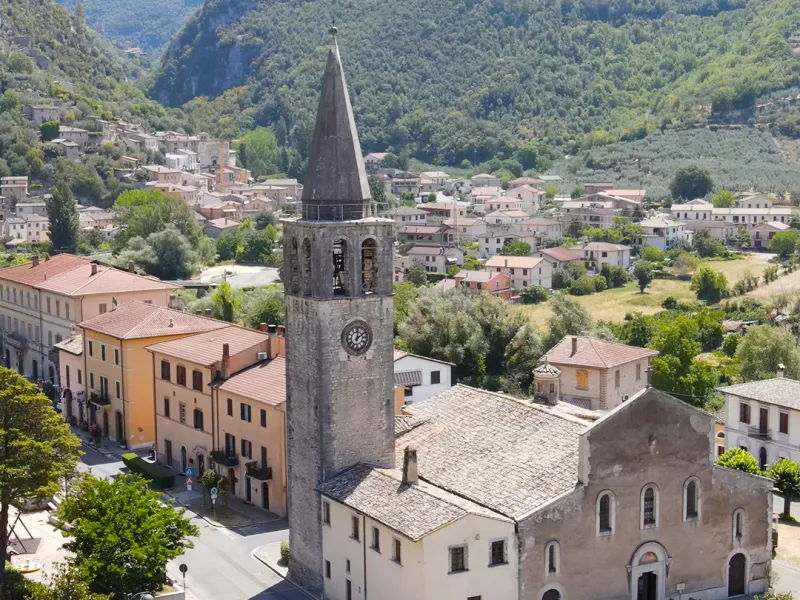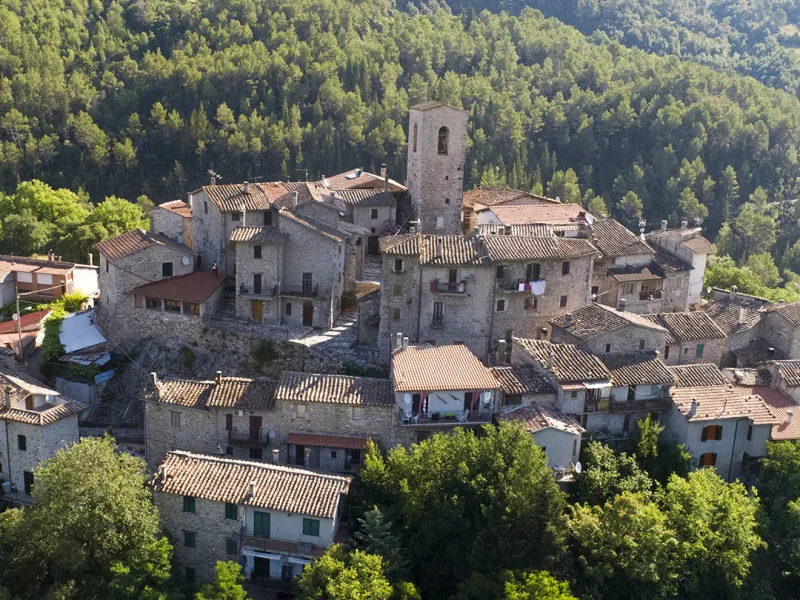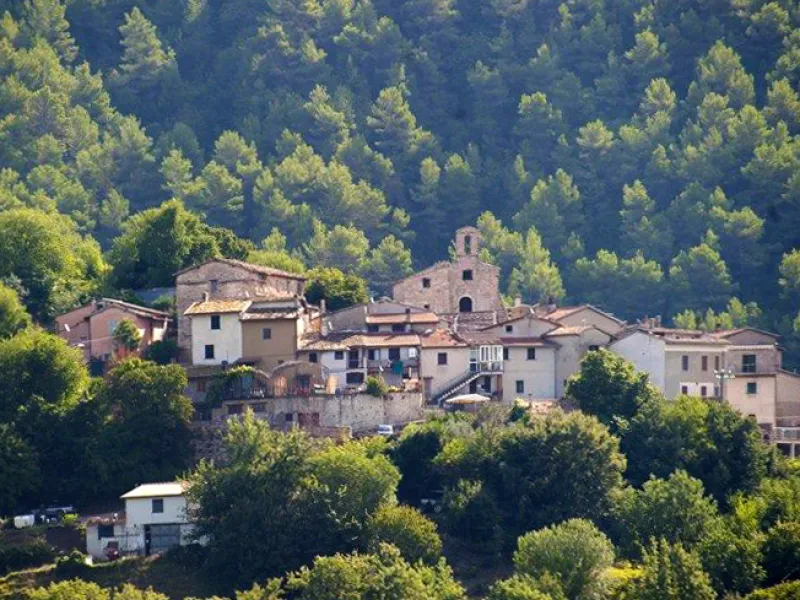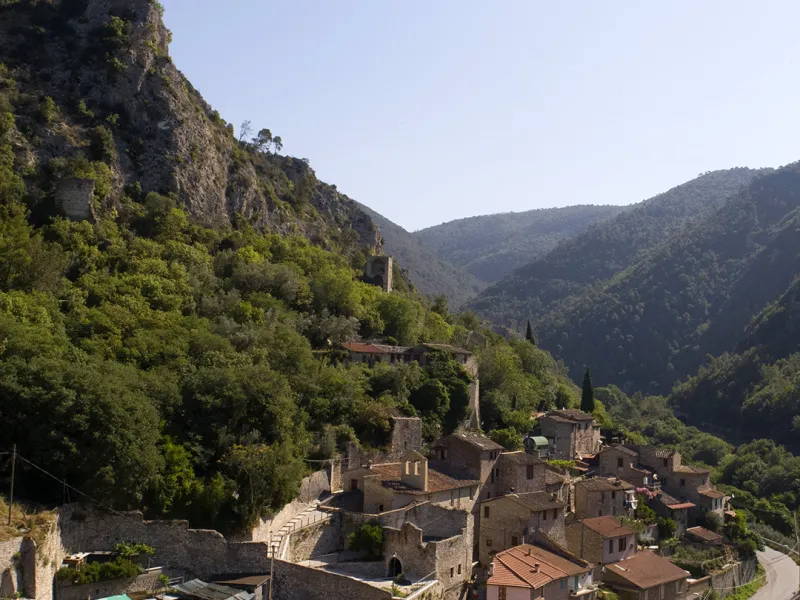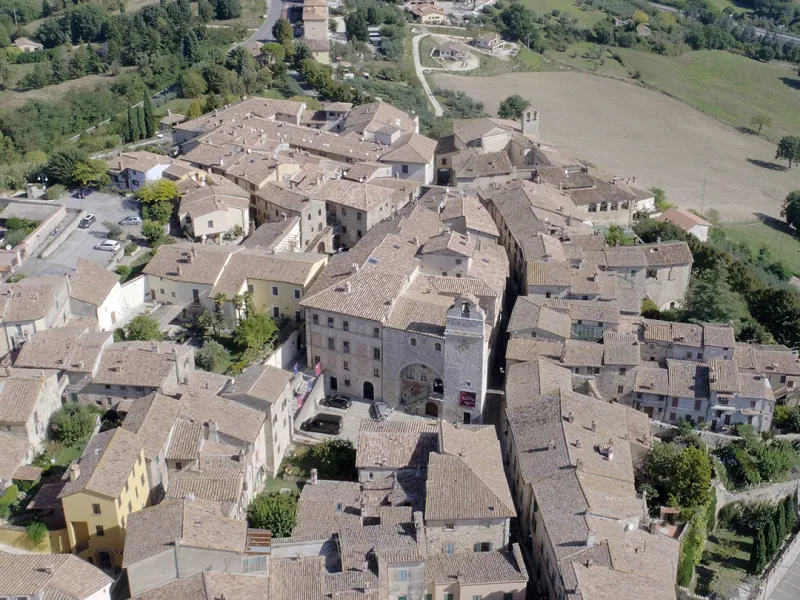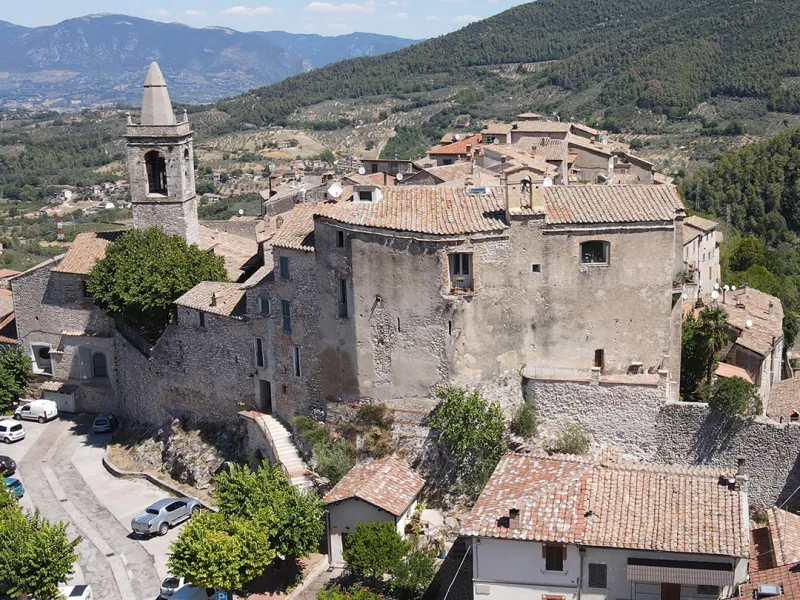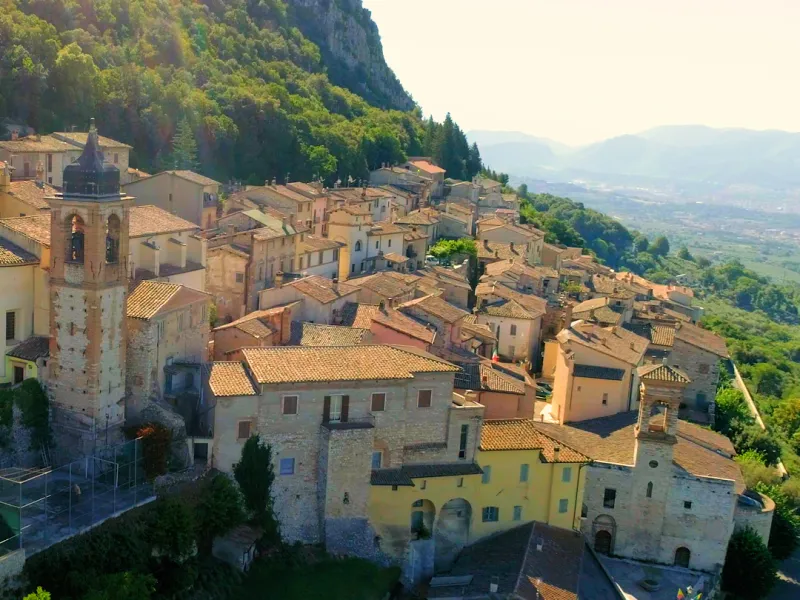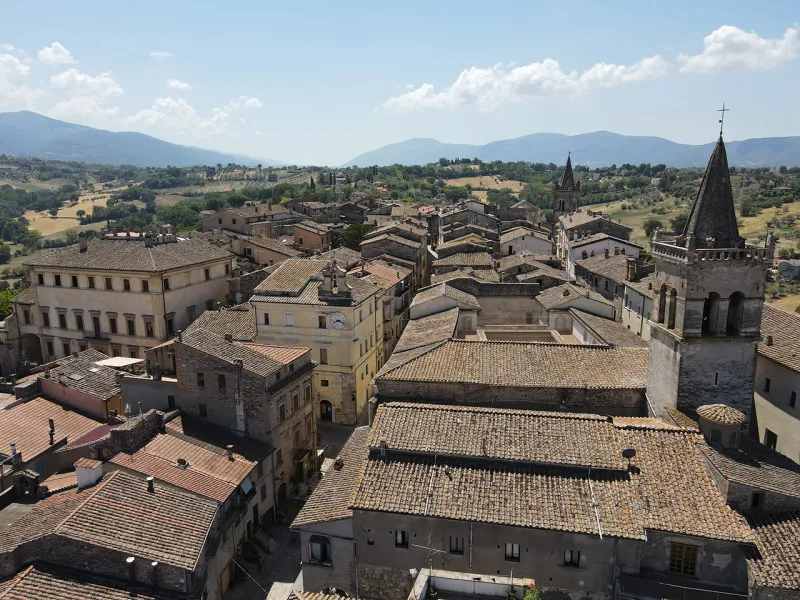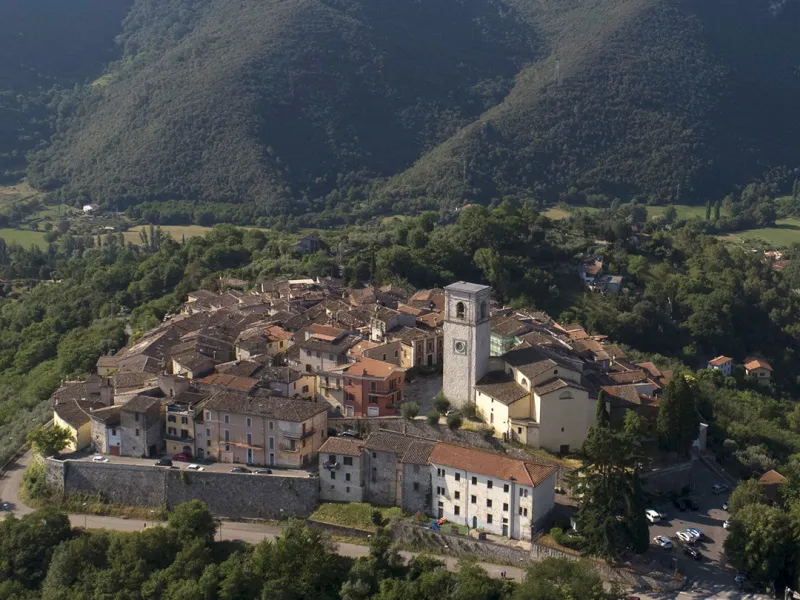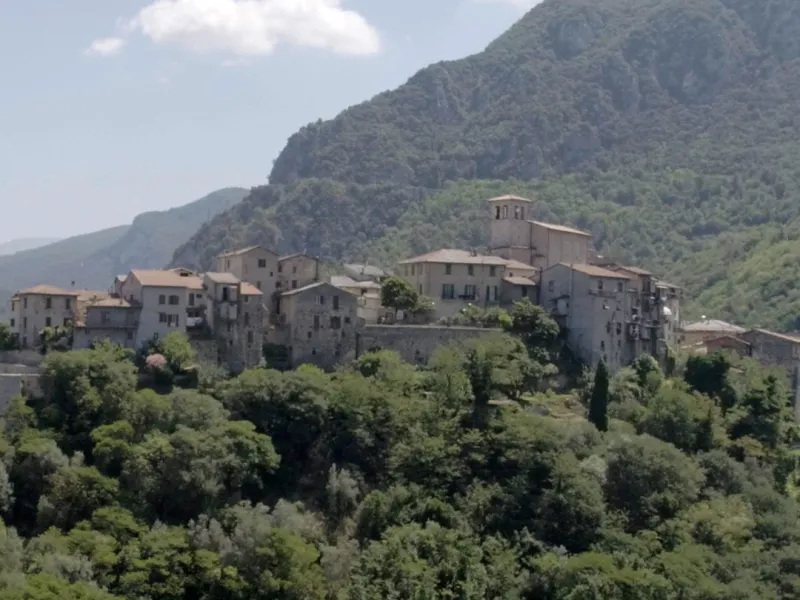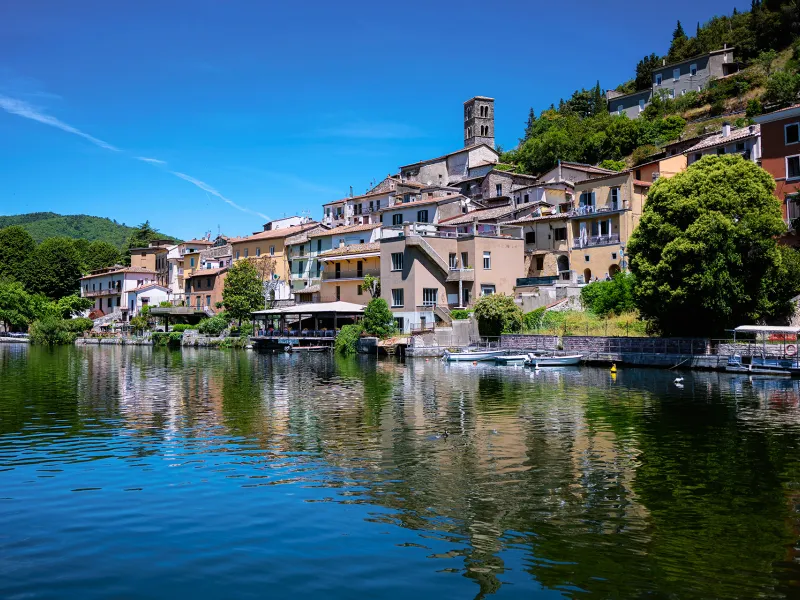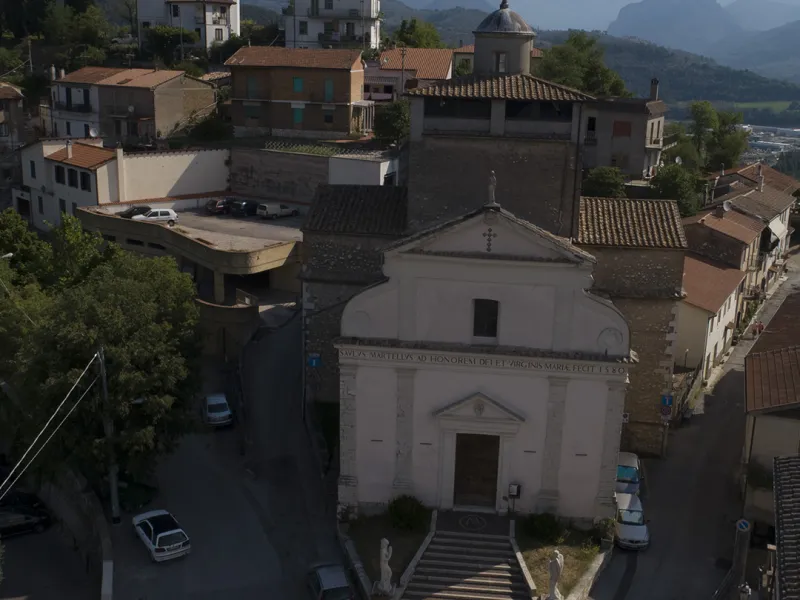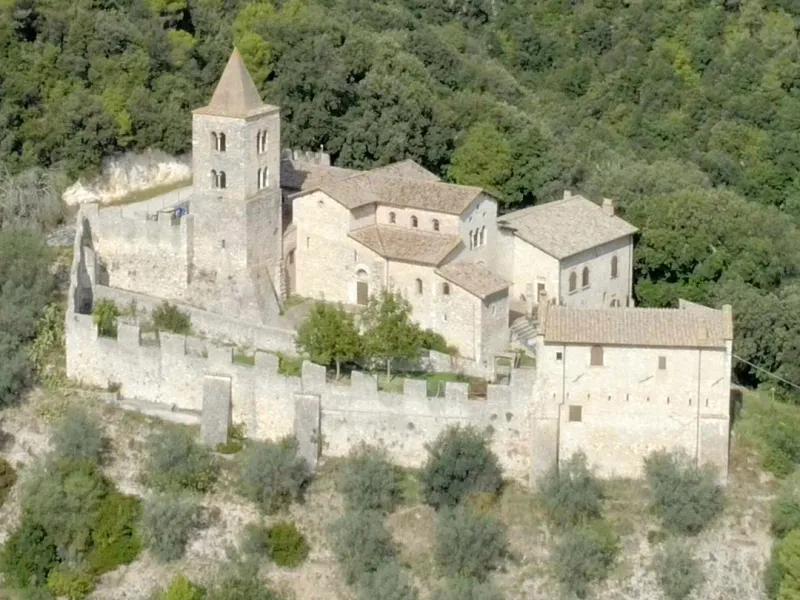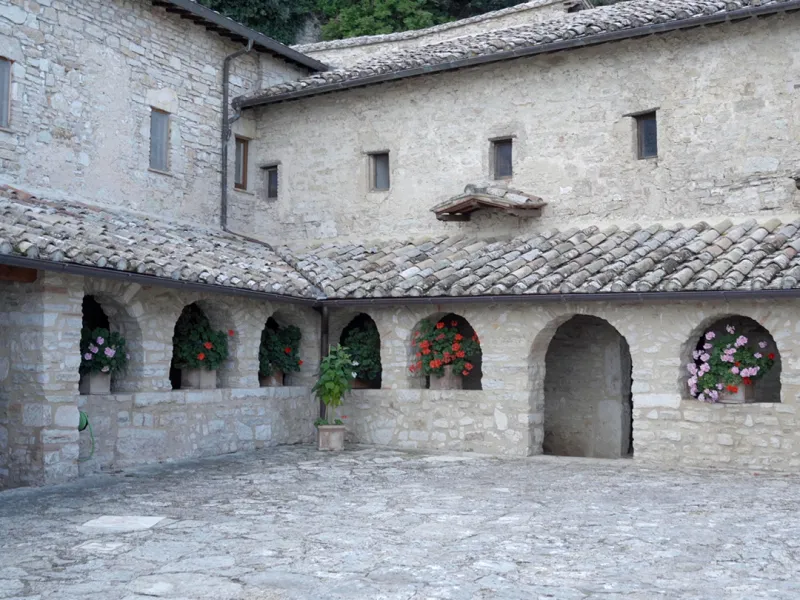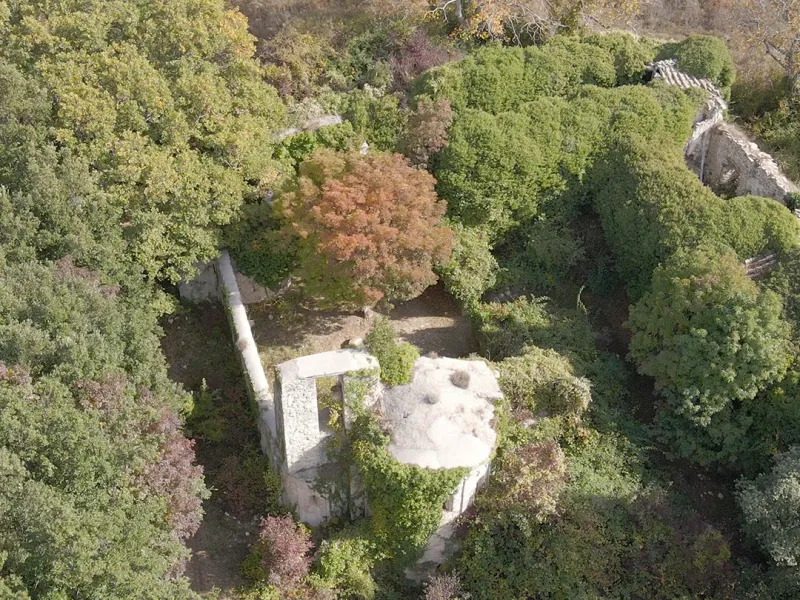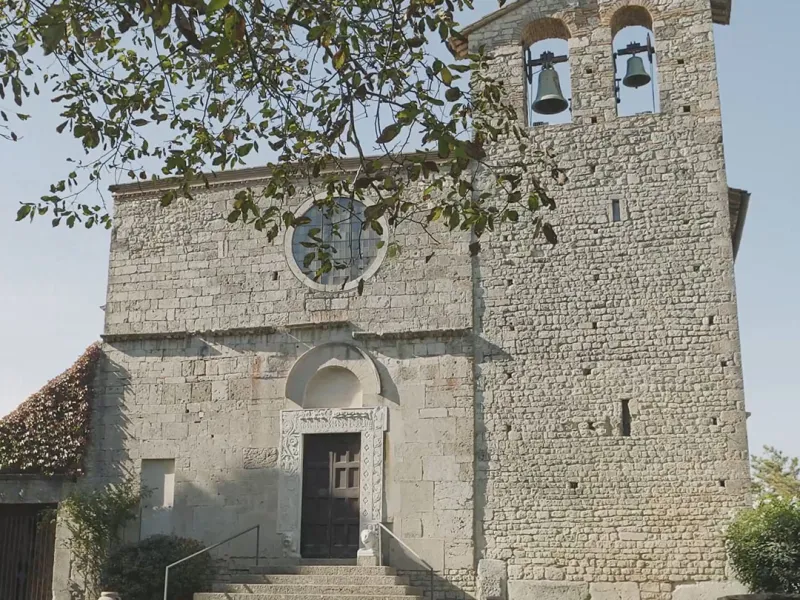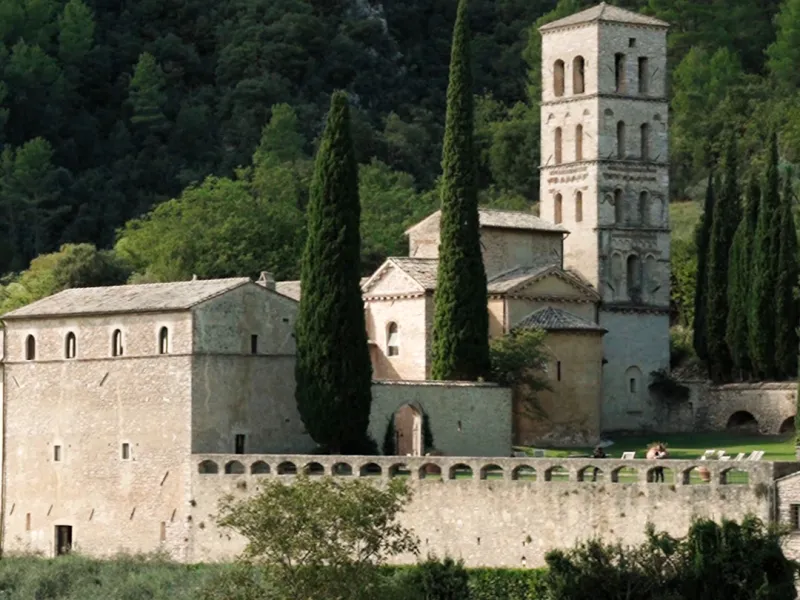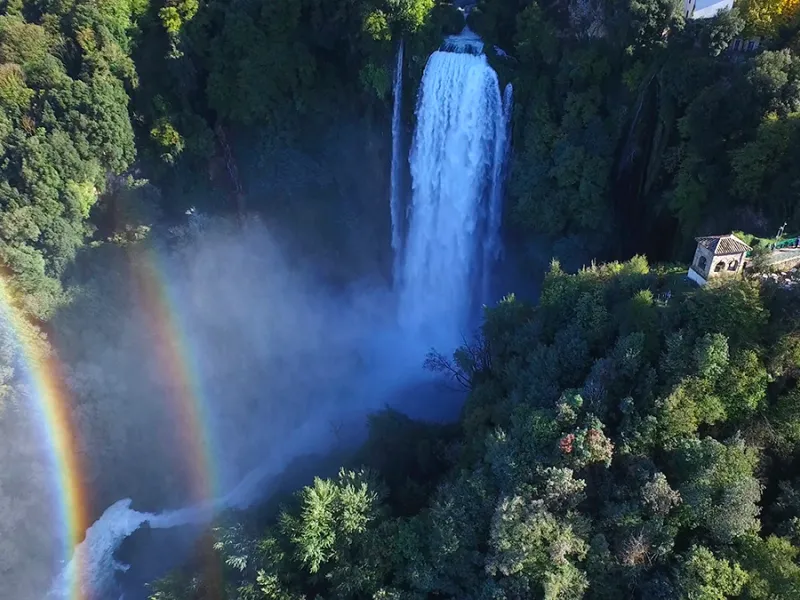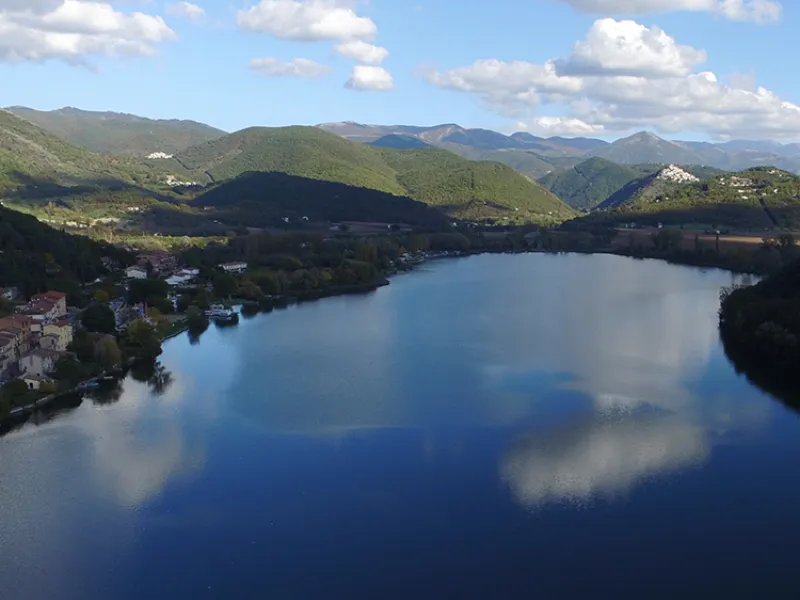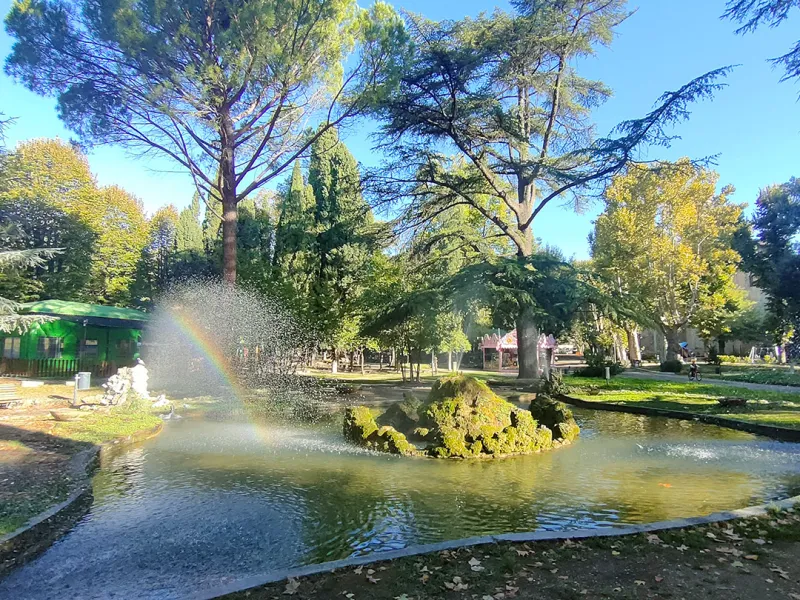Must see
Visit the city of Terni, take a look at the attractions, discover what to see and let yourself be fascinated by the surroundings just waiting to be discovered.
Aurelio De Felice Museum of Modern and Contemporar...
The Museum arises from the fusion of the Municipal Art Gallery, previously located at Palazzo Gazzoli and a new area ded...
Barbarasa tower
About three hundred towers were built in the city but by around 1600 very few were still standing. The best preserved, b...
Basilica of St Valentine
The Basilica of St Valentine is located about two kilometres from the centre of Terni, on the site of an ancient Christi...
Born in the city and related to the city
There are six large quartz cement sculptures in the public gardens in Via Giannelli next to the Passeggiata.
Building of the Chamber of Commerce
It was built in the mid-1930s in a city that wanted to magnify its new status as a Province through the construction of ...
CAOS Centro Arti Opificio SIRI
Since 1973 the space had hosted an industrial settlement, specifically a papal ironworks, the largest factory in Umbria ...
Cathedral of Santa Maria Assunta
The Cathedral of Terni is dedicated to Santa Maria Assunta and its actual appearance is the result of the reconstruction...
Church of Carmine
The construction of the Church of Santa Maria del Carmine is due to the presence of an image of the Virgin Mary, painted...
Church of San Cristoforo
The Church of San Cristoforo stands in an area of the historical centre of Terni that was profoundly transformed by post...
Church of San Lorenzo
The church, one of the oldest parish churches in the city, was built in the Romanesque period and has been enlarged and ...
Church of San Pietro
The present church, extensively remodelled over the centuries, dates back to the 12th century and has a gabled façade, a...
Church of San Salvatore
The church of San Salvatore, located in the small square of the same name, is a short distance from Palazzo Spada, the T...
Church of Sant'Alò
The Church of Sant'Alò, originally dedicated to St Peter, is one of the oldest and most significant religious buildings ...
Church of Santa Maria della Pace
Leaving the city centre, in the district of Valenza, well set in the landscape, you find this “d’auteur” church, a jewel...
Church of Santa Maria delle Grazie
The church is located within Le Grazie Park where a small church dedicated to Our Lady of Grace once stood.
Church of St Anthony of Padua
The design of the new church, the first built in modern times in Terni, was assigned to the architect Cesare Bazzani and...
Church of St Francis
The construction of the Church was undertaken in 1265. The original building had a nave with transept, in a Gothic style...
Claudia Giontella Archaeological Museum
The archaeological exhibition is divided into two different sections, pre-Roman and Roman, which tell the story of what ...
Composition of shapes
In 2001, it was the steelworks of Terni that donated the work of Umberto Mastroianni placed at the intersection between ...
Crypt of the Cathedral
It belongs to the ad oratorium type, but due to the simplicity of its floor plan, it can be attributed to the early peri...
Decorated design
The work by UNO proposes a tapestry, an aesthetic element inserted in a context that offers a particularly suggestive vi...
Diocesan Museum
The Diocesan and Capitular Museum was created with the primary purpose of safeguarding, making use of and enhancing the ...
Dionisio Tower
The medieval tower, remodelled in the 16th century, stands mighty and majestic on Via De Filis.
Former Post Office Building
The area of the former Post Office building on the main square of Terni, Piazza della Repubblica, was once the location ...
Government Building (Palazzo Bazzani)
Cesare Bazzani designed the Government Building (1930) overlooking Viale della Stazione.
Lance of Light
It is known to everyone as Arnaldo Pomodoro’s obelisk, but its real name is the “Lance of Light” (Lancia di Luce). It is...
Municipal Library (former Town Hall)
For centuries it was the building of power. Today it hosts Terni’s Municipal Library, a venue for cultural events as wel...
Palazzina Alterocca
Virgilio Alterocca, a name known world-wide for his postcards, was a courageous as well as enlightened entrepreneur, com...
Palazzo Alberici
Palazzo Alberici, located on Via XI Febbraio, is one of the most renowned Renaissance palazzos in Terni.
Palazzo Bianchini Riccardi
Palazzo Rosci (or Rossi), now named Bianchini Riccardi, dates back to the 16th century. Attributed by some to Bramante, ...
Palazzo Briganti
Palazzo Briganti deserves a position of excellence in Terni, "marked" by the designs of Mario Ridolfi and Wolfgang Frank...
Palazzo Carrara
The imposing volume of Palazzo Carrara, which for a long time was the residence of the Carrara family (one of the most i...
Palazzo Chitarrini
When drawing up the reconstruction plan for the bombed city, Mario Ridolfi included Via Primo Maggio parallel to Corso T...
Palazzo Fabrizi
The palazzo, located on the corner of Via Cavour and Fratini, is an 18th-century reconstruction of one or more earlier b...
Palazzo Gazzoli
The majestic palazzo which bears the name of the noble Gazzoli family who commissioned it at the end of the 18th century...
Palazzo Manassei
This aristocratic building, profoundly renovated in the 17th century, the century to which the frescoes on the main floo...
Palazzo Mastrozzi Magroni
The palazzo, located on the corner of Via Cavour and Via Tre Colonne, was probably built in the 16th century based on th...
Palazzo Mazzancolli
Palazzo Mazzancolli is one of the most important examples of medieval architecture in Terni.
Palazzo Montani
Located between Via Garibaldi, Europa Square and Corso del Popolo, the Palazzo, a typical 17th-century patrician residen...
Palazzo Montani Leoni
Palazzo Montani Leoni was built in 1584 and commissioned by Aurelio Fazioli, as recorded on the ancient architrave of th...
Palazzo Pierfelici
The Palazzo dates back to the 16th century but underwent renovation in the 18th century and the top floor with the corni...
Palazzo Possenti
The palazzo, with late 16th-century features, belonged to Pier Gaetano Possenti, a sculptor and architect who drew up th...
Palazzo Primavera (Spring Palazzo)
Today it goes by the name of Palazzo Primavera (Spring Palazzo) and it appears to be a recent construction.
Palazzo Sciamanna
The construction of the palazzo dates back to 1603, as indicated by an inscription on an epigraph above the entrance doo...
Palazzo Spada
Headquarters of Terni's City Hall, commissioned by Michelangelo Spada, it originally consisted of two parts that were jo...
Paleolab (Ex church of St. Thomas)
Umbria, its geological transformation and the animals that populated the territory up to 300 000 years ago are at the ce...
Playing Upstream
The work of MP5 is a fun recreation of the famous wind-up submarines we used to play with quite some time ago.
Porta Sant'Angelo
Porta Sant' Angelo, the western gate of the medieval city, is so called because a church situated a short distance away ...
Porta Spoletina
Through Porta Spoletina, the Flaminia consular road leading out of Terni, in a southwest northeast direction, headed tow...
Roman Amphitheatre
One of the most significant pieces of evidence of the rich historical stratification of Terni and the most imposing pres...
Roman Walls
Until the second half of the 19th century, the city of Terni was entirely enclosed by the Nera River, the Serra stream, ...
Secci theatre
One of the warehouses of the former Siri factory was earmarked to house the theatre (at CAOS - Centro Arti Opificio Siri...
The 12.000-ton Press
The 12.000-ton Press is a symbol of work, of technology, of the commitment of an entire city to its factory.
The Arms Factory
The Arms Factory was the first establishment that marked the beginning of industrialisation in the Terni basin. It began...
The eternal embrace
The bronze sculpture was donated to the City of Love by the artist who created it, the American Mark Kostabi.
The Steelworks
The Steelworks, built in 1884-87, was described at that time as "the most beautiful steel mill in the world”.
The Videocentre (former Officine Bosco)
The restoration and reuse of the warehouses of a metalworking factory led to the construction of the Videocentre in Tern...
The Zodiac Fountain
The monumental fountain in Tacito Square is the iconic emblem of Terni and a symbolic representation of its steel indust...
Uprium - Hiperion
Only steel could be used for the sculpture that welcomes those entering Terni from the motorway ring road. A sculpture t...
Verdi theatre
The theatre, named after Giuseppe Verdi, is currently once again awaiting the completion of restoration work and adaptat...
“Fratelli Fontana” Multifunctional Complex
The building, designed by Mario Ridolfi with Wolfgang Frankl between 1960 and 1964, is occupied by a hotel, offices, sho...
St. Erasmo archaeological site
The site of St.Erasmo, about 890 metres above sea level, is of remarkable archaeological interest, hosting the remains o...
The archaeological site of Carsulae
The city of Carsulae was probably founded around the end of the 3rd century BC, with the conclusion of the Romanisation ...
Torre Maggiore Temples
On the summit of Torre Maggiore, at 1121 above sea level, in a highly suggestive scenario, are the remains of two sanctu...
Acquapalombo
Acquapalombo is a tiny village in the territory of Terni, perched on the ridge of a hill in the Serra Valley, an area of...
Acquasparta
The origin of the name indicated its proximity to the springs, “ad aquas partas”. Still today the area of Acquasparta, a...
Appecano
The small village of Appecano clings to a rocky outcrop almost 600 metres above sea level, surrounded by the greenery of...
Arrone
You can reach Arrone in just a few minutes from Marmore Falls, following a short path that winds through the spectacular...
Ferentillo
The Castle of Ferentillo consists of two imposing fortresses positioned on opposite sides of the valley and steep walls ...
Poggio Lavarino
Poggio Lavarino is one of the many historic villages dotting the valley of the Serra torrent.
Polenaco
Polenaco is a tiny hilltop village nestled among the mountains and forests of the Serra Valley.
Rocca San Zenone
The place name recalls the presence of the castle that stood guard over the Serra Valley, controlling its access.
San Gemini
San Gemini is a charming Umbrian village, whose origin is uncertain, but probably linked to the development of the nearb...
Stroncone
The town of Stroncone possesses all the characteristics of a medieval Umbrian village.
Cesi
From the "terrace of the Terni basin" (which is the name given to this village on the slopes of Mount Aeolus), the horiz...
Collescipoli
The village of Collescipoli, one of the Ancient Municipalities in the territory of Terni, is a small gem. It compactly o...
Collestatte
Perched on a hill on the Valnerina of Terni, dotted with hilltop villages, Collestatte looks towards the majestic Marmor...
Papigno
Papigno, a small village on the Valnerina of Terni, still evokes its past as a medieval castle.
Piediluco
An enchanting village overlooking the lake of the same name and stretching out at the foot of Mount Luco.
Torre Orsina
Torre Orsina is a delightful village on the Valnerina of Terni, perched on the summit of the Santa Maria hill, crowned b...
Abbey of San Cassiano, Narni
Secluded amidst the green woods of Monte Santa Croce, in the Narni area, the Benedictine abbey of San Cassiano has the c...
Speco of St Francis
The Speco di of St. Francis, set amidst magnificent woods in the locality of Sant'Urbano di Narni, is one of the greates...
The Abbey of San Benedetto in fundis, Stroncone
Along the route that connects Stroncone to Miranda are the remains of the Abbey of San Benedetto, which takes its name “...
The Abbey of San Nicolò, Sangemini
The church of San Nicolò was founded around the year 800 by St Geminus, who came from Syria and became a Benedictine mon...
The Abbey of San Pietro in Valle, Ferentillo
The abbey of San Pietro in Valle has thousands of years of history and has its roots in the early Middle Ages.
Marmore Falls
The Marmore Waterfall is created by the River Velino dropping down into the Nera River below, with a drop of 165 metres ...
Piediluco Lake
Located at the southern end of Umbria, on the border with Lazio, nestled between the Luco and Caperno mountains, it is t...
The Passeggiata (public gardens)
The Passeggiata public park was originally a green area at the disposal of the bishopric (the bishop’s gardens) and exte...
